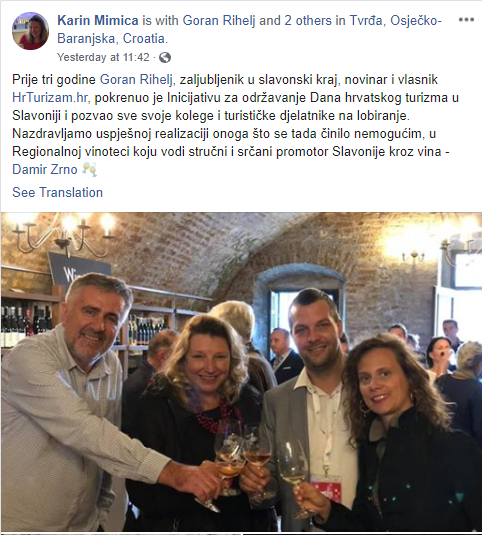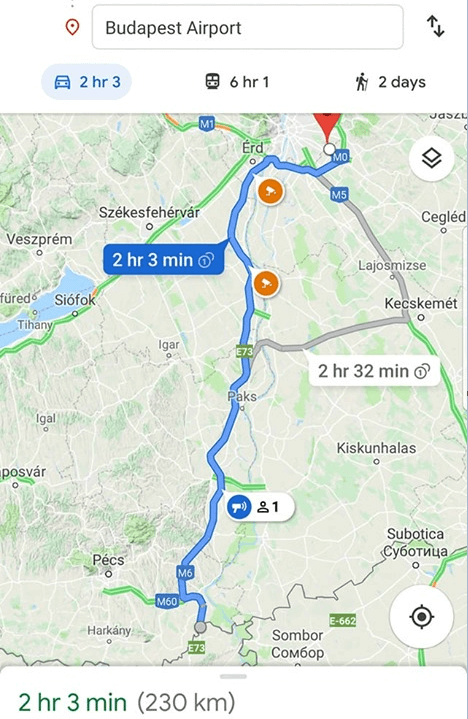HeadOnEast, Quality Croatian Tourism Branding Made in Slavonia
October 8, 2019 - The story behind HeadOnEast, the best tourism branding project I have seen in years in Croatia. And like so much excellence in the country, a brand 100% made in Slavonia.
Not so many people know that the reason I moved to Croatia was due to the promotional activities of the Croatian National Tourist Board.
The year was 2002 and I was working as a civil society coordinator in Somaliland for an international aid agency when I saw a CNN advert which had me transfixed. Croatia, the Mediterranean as It Once Was. Having just sold my house in the UK, I decided there and then to buy my new home in Croatia, and less than two months later, I found myself the proud owner of a house in Jelsa on Hvar.
Ah, Croatian tourism branding, one of the great conversation topics in these parts. Croatia is obsessed with how to brand itself, even having an annual conference, Branding Hrvatske, which is now in its fifth year. This in addition to other Croatian branding conferences we are served up each year.
I will confess I am not a big fan of the current Croatia, Full of Life branding. While I can appreciate the flexibility of Croatia, Full of Wine, Heritage, Culture and the rest. it doesn't really say anything and is a vague generalisation which could be applied to almost anywhere. The Mediterranean as It Once Was, for me at least, brought Croatia immediately into focus. With the tourist industry struggling to recover from the devastation of war, in addition to the challenges of trying to explain to people where exactly this new independent state of Croatia was, it was a brilliant slogan and campaign and I am sure it attracted more than just this fat Brit that took an interest in Croatia as a result.
There have been some questionable branding exercises over the years, with none standing out (in a positive way), which is why the recent project coming out fo eastern Croatia ahead of Days of Croatian Tourism in Slavonia made such an impression on me. Head on East - Hedonist@Slavonia. A fantastic play on words, inviting people to head on out to the east of Croatia to enjoy Slavonia's famed hedonist gourmet welcome. So many things packed into one slogan, and it was only when I tried to find out more about the origins of the slogan and who created it that I realised just how clever it was.
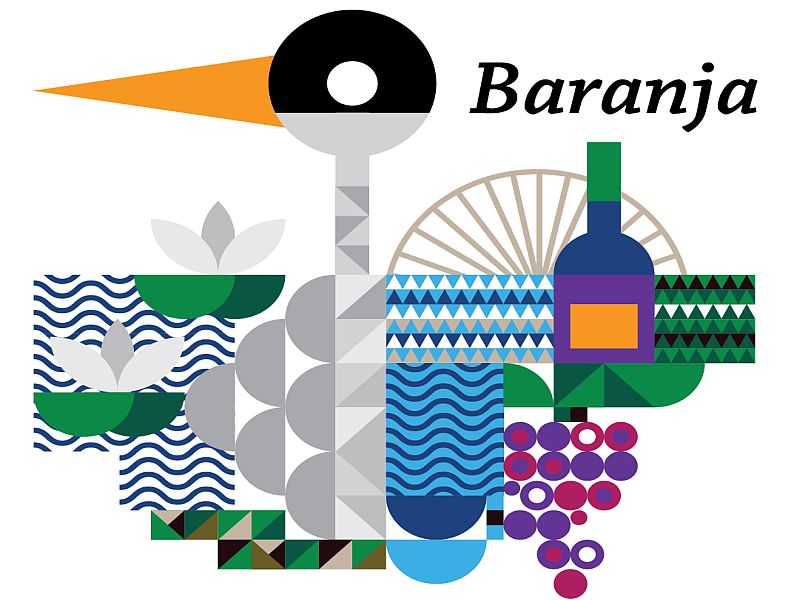
But before we start, a quick word about the word 'hedonism' as it has a slightly different - and important - perception in Croatian than in English, at least in my opinion. In Croatia, hedonism means good food, wine, lifestyle - the finest things in life with great hospitality, a little to excess. Andro Tomic, the legendary Hvar winemaker, would be a perfect example of this with his bon vivant lifestyle. And while it kind of also means that in English too, the term has been somewhat hijacked in recent years to reflect other types of excess, and when a globally famous swingers hotel in Jamaica brands itself as Hedonism, one can understand some international confusion if Croatian branding talks of hedonism without referring to gastronomy in its core message. It is why Hvar's choice of Genuine Hedonism as a slogan - at the same time it was becoming known as a top party destination - sent out completely the wrong message.
But Head on East Hedonism to the Slavonian gourmet heartlands is an altogether different story. Pure genius. So who is the agency behind it? I was VERY surprised by the answer when I contacted the Slavonia Baranja Regional Tourist Board for more information...
No agency at all. The slogan was made in Slavonia, inhouse by the team at the regional tourism board, with the design of the logos developed by Osijek designers Marko Jovanovac and Ante Vekic from Symbol.

The play on words of HeadOnEast and hedonist was one level of genius, but it also masked one of the biggest challenges in branding the region. Several years ago, I held initial talks with an idea to do a Total portal for the east of Croatia, but the size of the task ahead was obvious when we got stuck at what to call the portal. Total Slavonia was the most obvious one for me, but that brought objections from Baranja and Srijem, while Total Eastern Croatia was a little too long. In the end, the initiative came to nothing for other reasons.
And while what to call the east was one issue, there was also the issue of brand recognition of Slavonia. Slavonia, Slovenia, Slovakia. Slovenia and Slovakia are frequently confused with each other, while Slavonia is only really well-known in the region, not so much further afield. This issue was highlighted once more to the regional tourist board at the ITB Berlin tourism fair, when a visitor asked why Slovenia was being promoted at the Croatian stand.
How to brand a destination of 5 regional tourist boards where food, wine, and hospitality were key elements of the offer, but where regional and international recognition was different and where there was no agreement locally on what to call the region as a brand? Quite a challenge.

A region located east of almost all of the target markets, and located in the east of the country.
Head on East!

The Symbol designers were tasked with created different mosaics for each destination and type of event, portraying the various things that the region or sector was famous for. See Baranja, land of wine and Kopacki Rit, and Djakovo, land of famous cathedral and Lipizzaner horses, above.
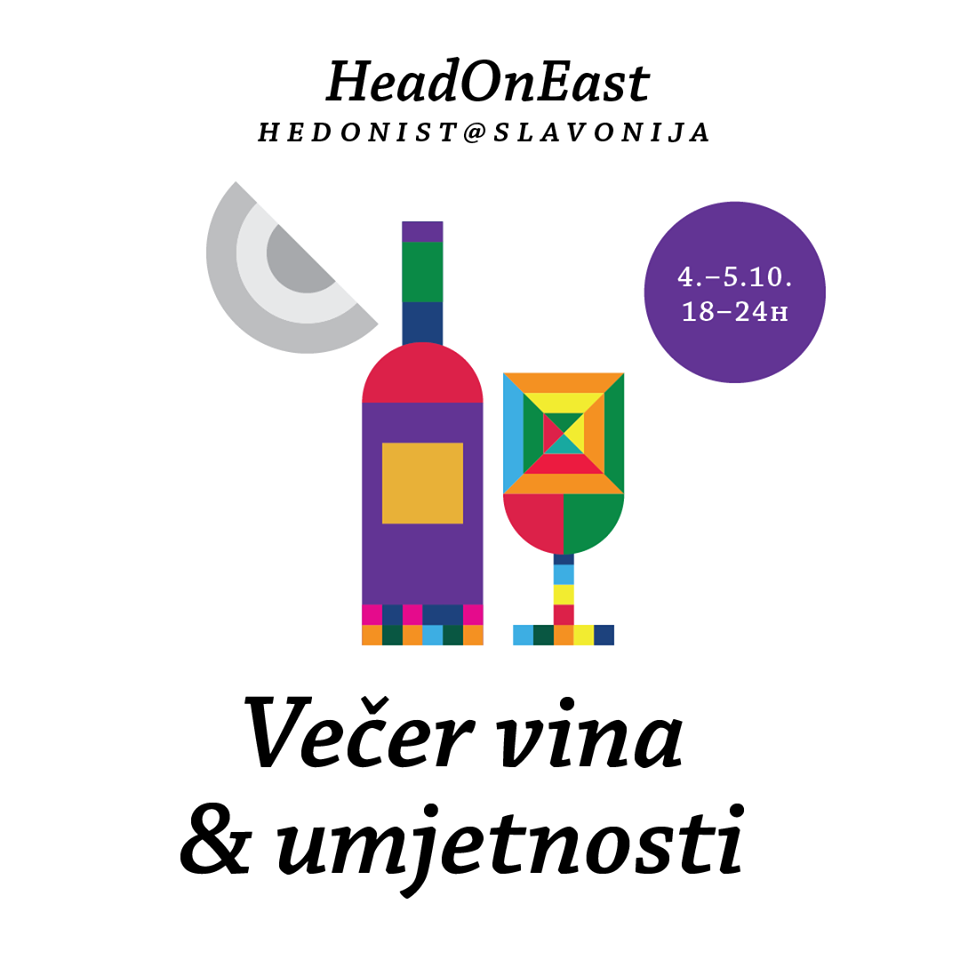
And underneath the main HeadOnEast slogan, a hashtag to define which part of eastern Croatia we are looking at - HeadOnEast - Hedonism@Baranja.
Quite brilliant.
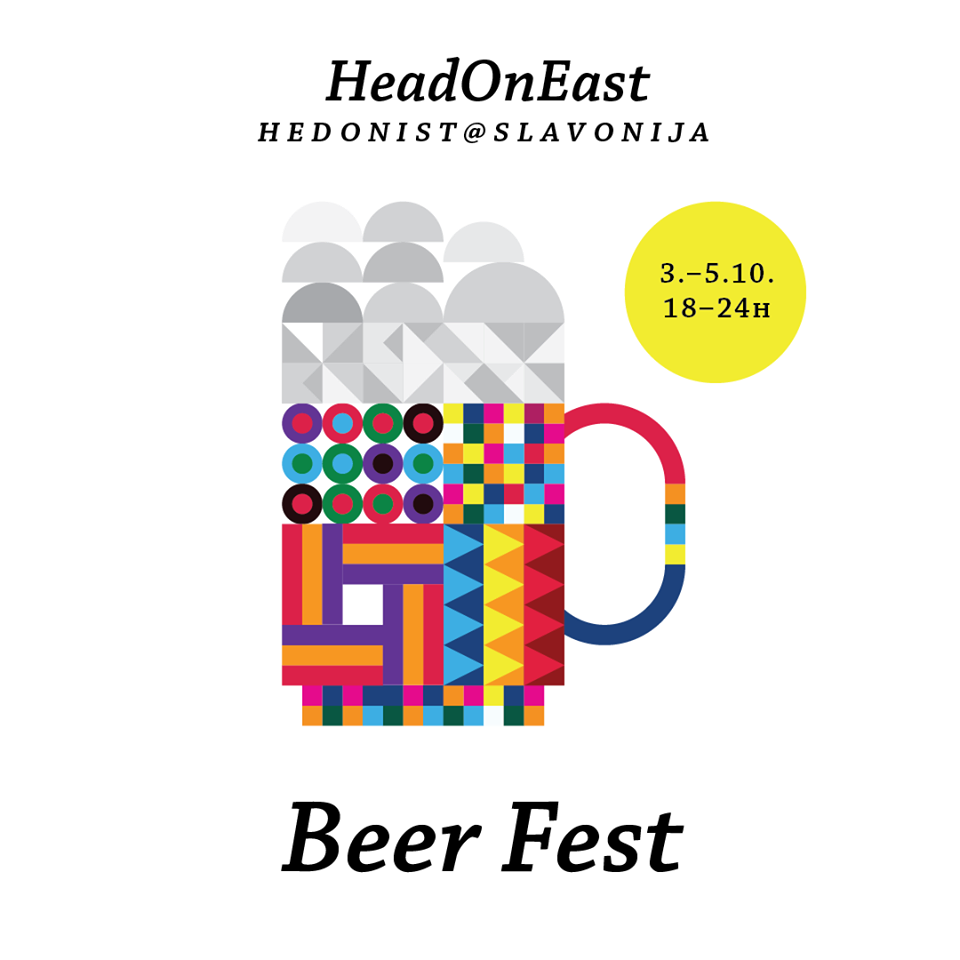
HeadOnEast branding really came into its own in the Osijek Tvdja festival from October 3-5. A beer festival.
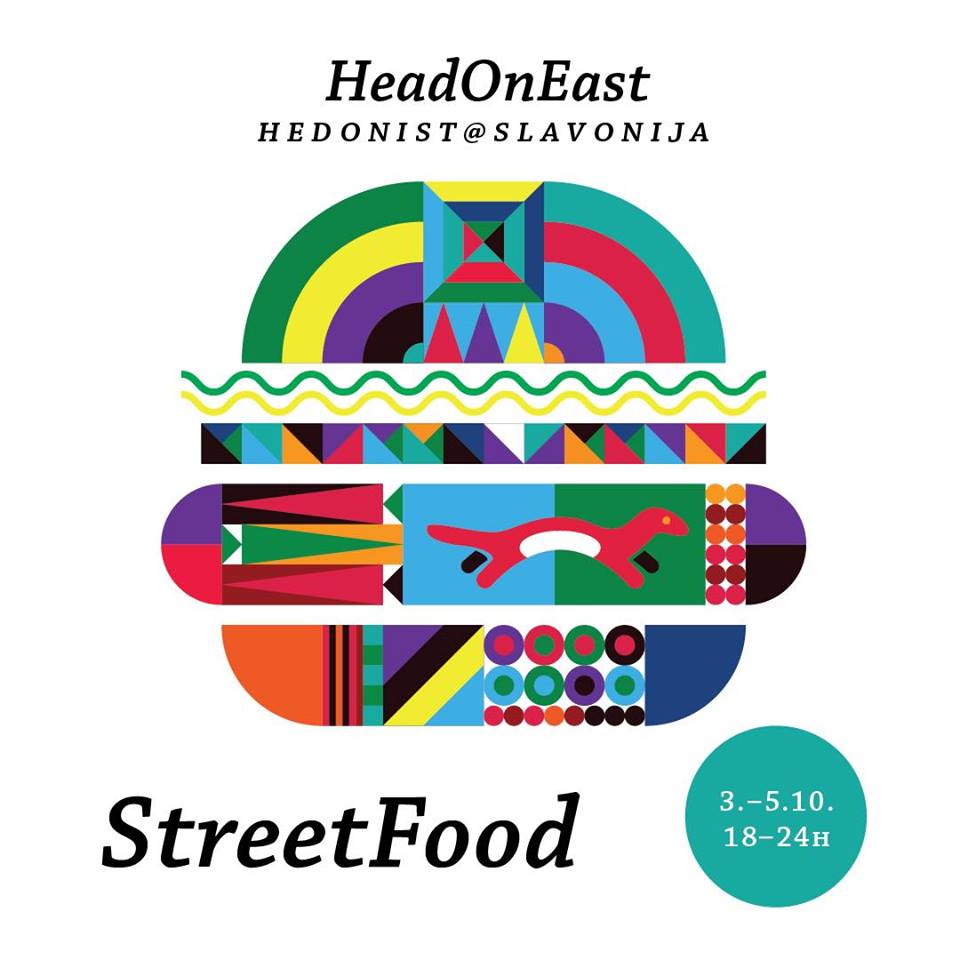
And a great selection of street food.

A REALLY impressive festival of lights as the old town's historic buildings sported new, multi-coloured facades.
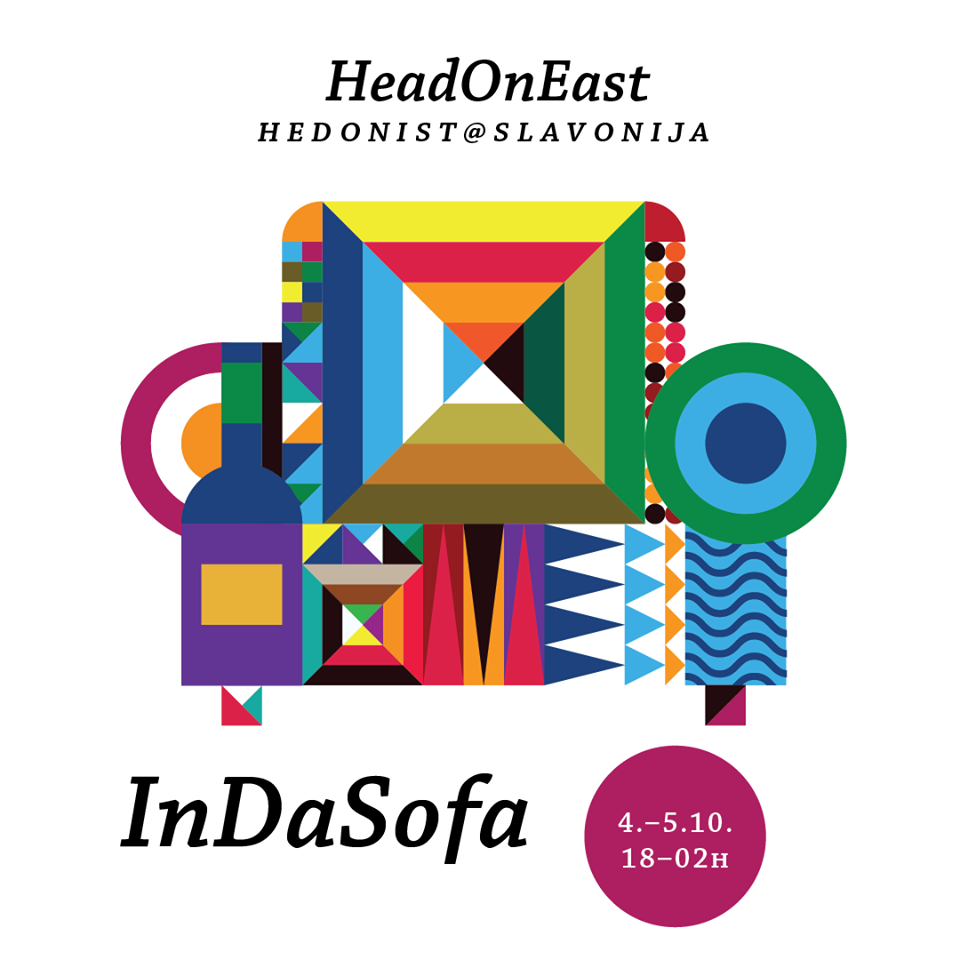
And individual parts of the festival, including the InDaSofa chill zone.
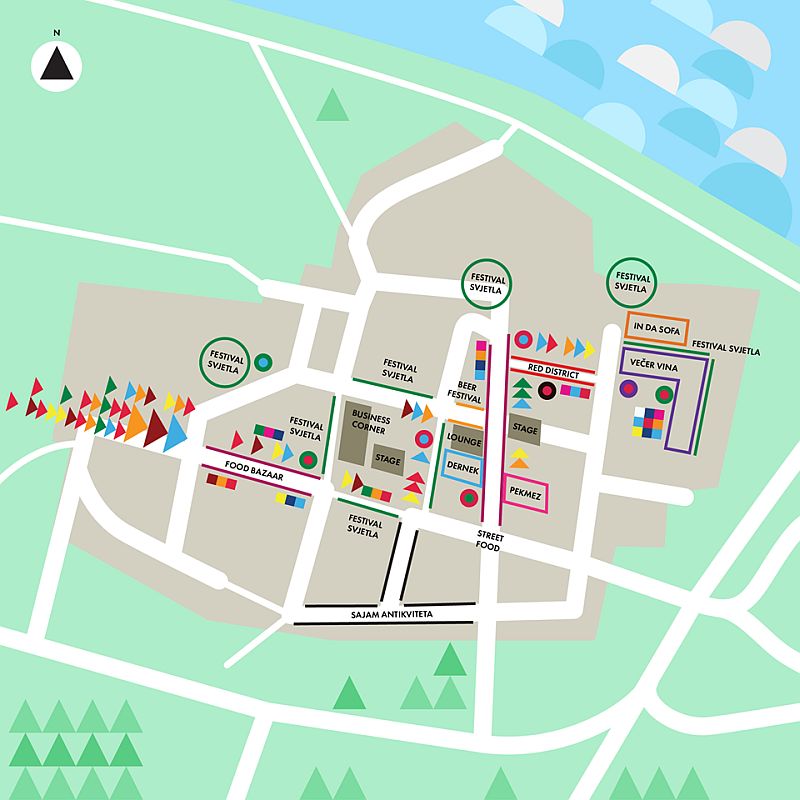
A superb logo, to match the organisation of the event itself. Made in Slavonia.
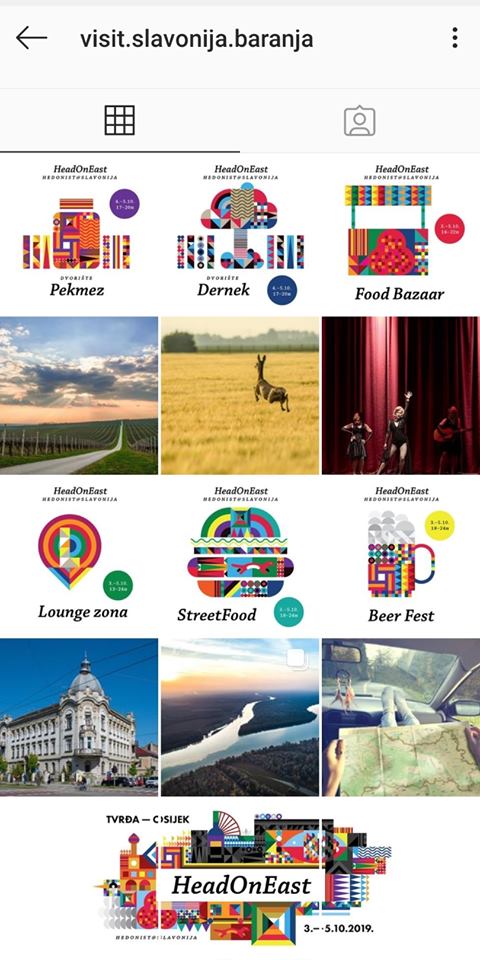
And, as I wrote yesterday, now that the lights have been turned off, the stalls dismantled and the visitors departed, what are the next steps? A campaign of education for the rest of Croatia on the joys of eastern Croatia and why it is a fantastic place to visit. And it really is, I am going back in a couple of weeks for the weekend with the family to explore a little more.
And wouldn't HeadOnEast - Hedonist be a great slogan for a national campaign?
To learn more about the wonders for those who do head on east, here are 25 things to know.
A Random Search for an English Pub in a Field in Slavonia
October 7, 2019 - What else would you expect to find in the middle of Slavonia than a British phone box in the middle of town and an English pub in the middle of nowhere?
It is many years since I have had a routine, and I am not sure that I could fit back into one these days if I had to. Running TCN requires a certain amount of flexibility, and living in Croatia has taught me to take each day as it comes, and to expect the unexpected around every corner.
Some days, the unexpected is rather more surreal than normal, even by Croatia's impressive standards.
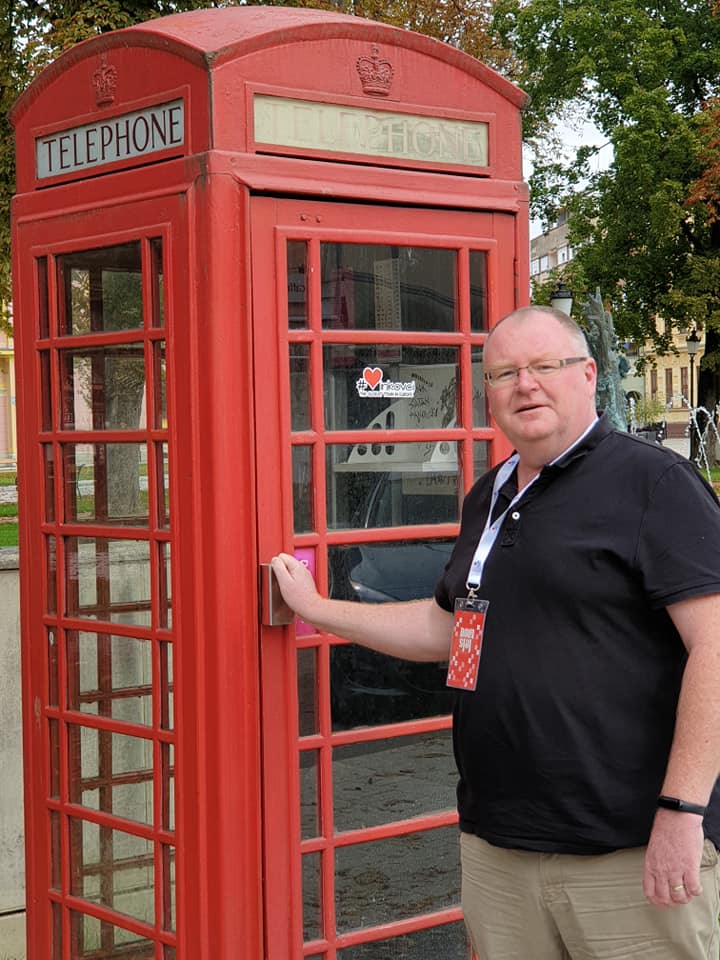
My first visit to the oldest continuously inhabited town in Europe took place on my trip to Slavonia last week. I was keen to learn about the considerable history of Vinkovci, but the first thing which confronted me was something altogether familiar from me - a bona fide British telephone box.
Rather surreal. It was explained to me that it had been brought to the town by a man from Leeds who was a local legend, having arrived in 1991 as a volunteer to defend Croatia. Now a Croatian citizen, he has been here ever since.
And he had opened a real British pub in a village outside of the town.

Now I really was losing the plot. I typed 'The White Boar, Vinkovci' into Google, and sure enough, images of men in a pub appeared. Never having heard of this chap or the pub, I endeavoured to pop in and say hi. A good job I had some of that TCN flexibility built into my schedule.
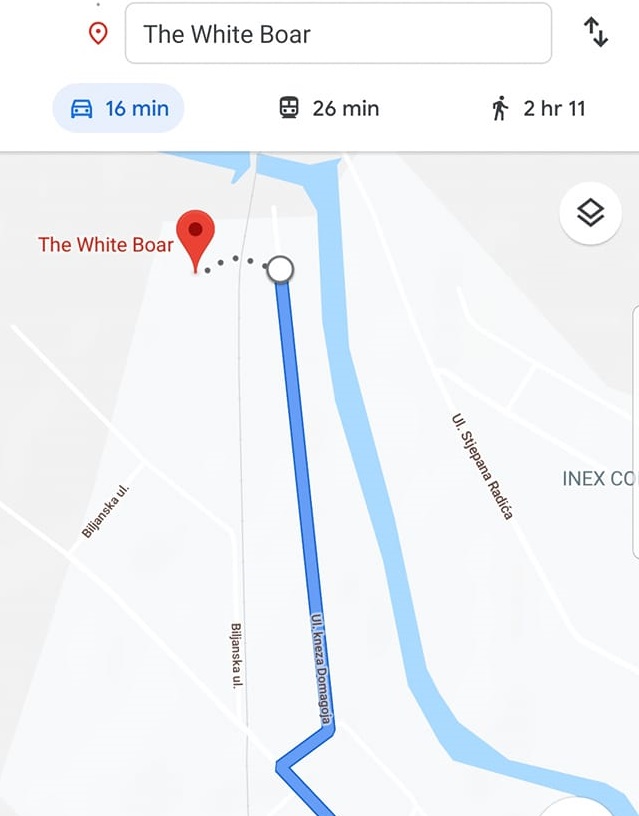
With the aid of modern technology, going off to discover things is a lot easier than it used to be.
Or so I thought.
As I came to the top of the road Google had decided was my route to The White Boar, the road ran out of houses, and there was still no pub.
In fact, all that was left was...
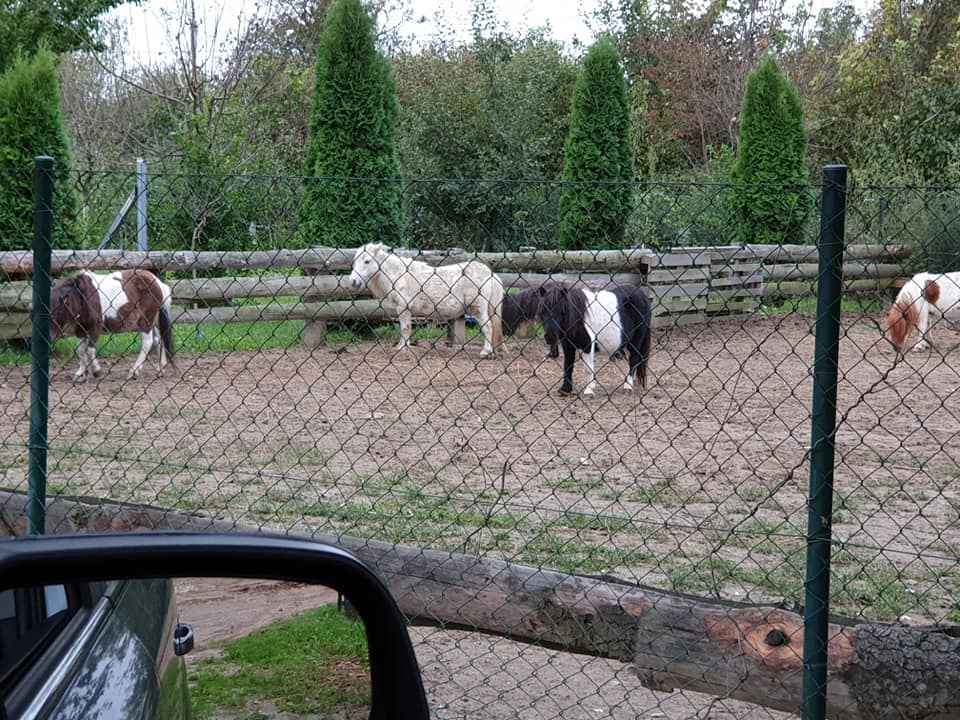
A field of Shetland ponies, just what you would expect to find wandering around Slavonia looking for an English pub.
People were fairly hard to find but eventually one local told me that yes indeed, there was an English pub, and it was close to the train tracks and there was a path of sorts to drive along.
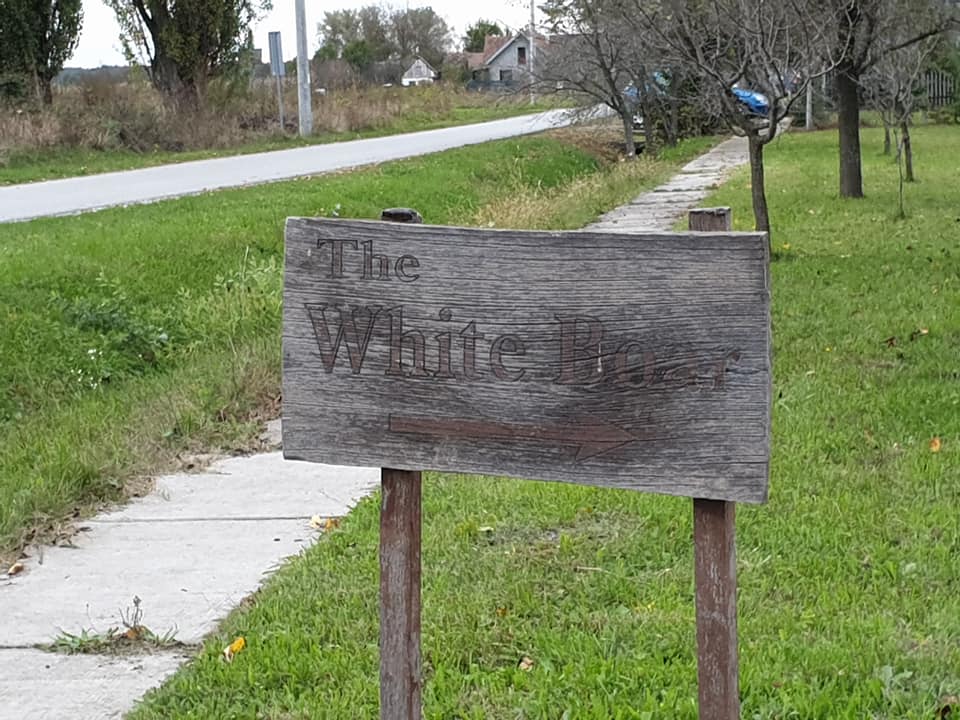
I found the road that went over the train tracks, and my first clue! A weathered sign for The White Boar!
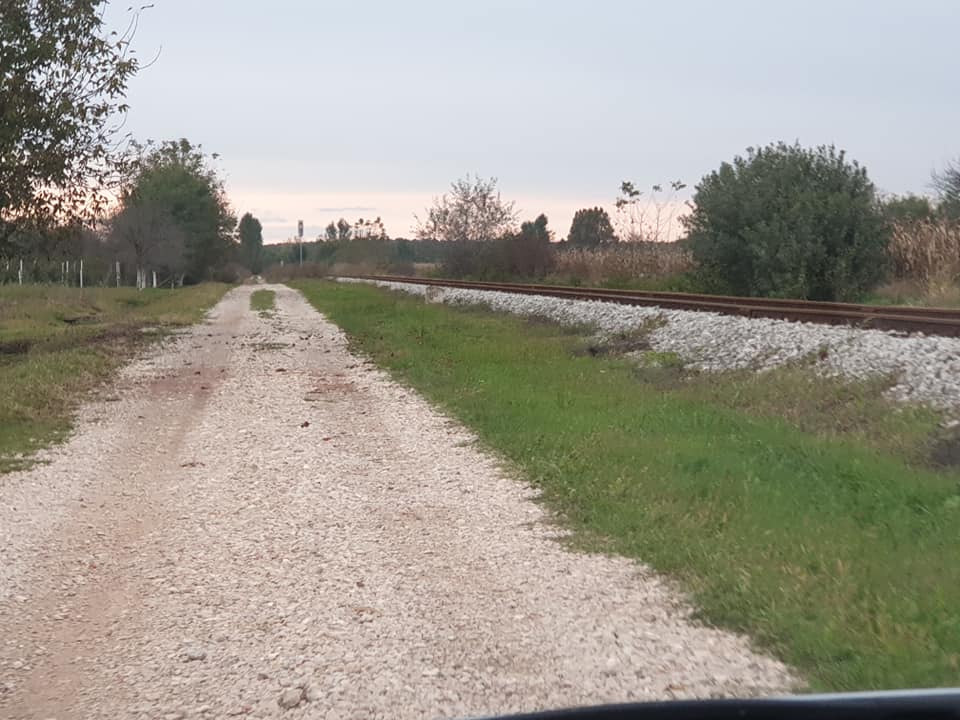
I will confess I was dubious as I set off up the rough path next to the railway track, even more so after a couple of hundred metres with no sign of a pub. And then the path veered to the left away from the train tracks and towards a field. I was literally in the middle of nowhere in the middle of Slavonia.
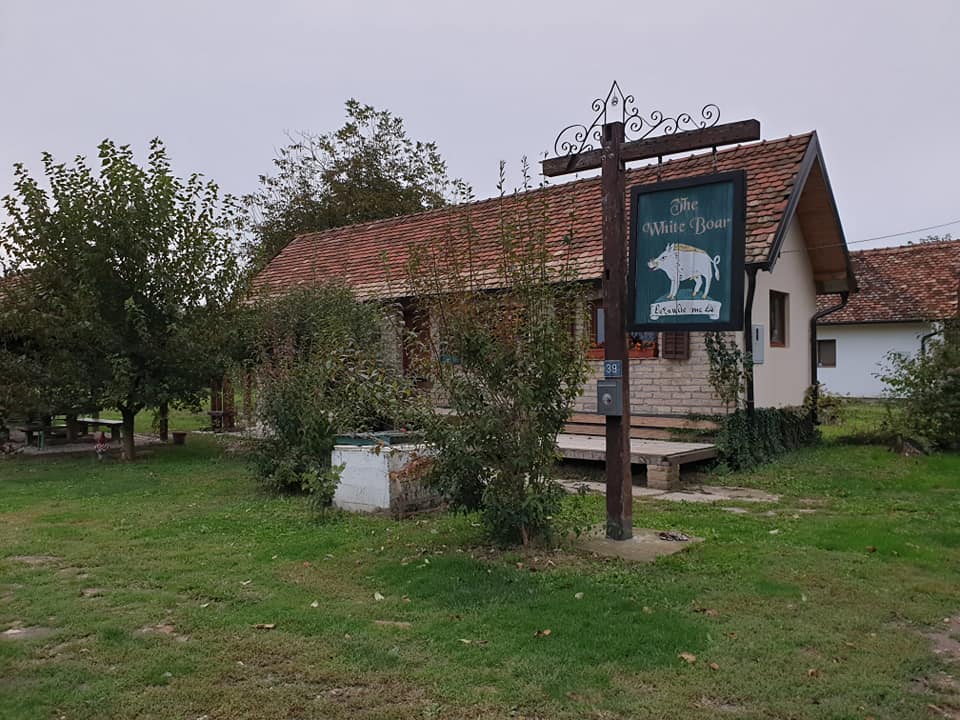
And then I saw it - the magnificent White Boar, which looked VERY inviting and reminiscent of a country village pub back in Blighty.

And, checking out the information about the landlord and the rules of the pub, it seemed to be rather a fun place indeed.

Sadly it was closed. I called the number on the board, then texted, but owner Steve had popped back to the UK for a few days and would be back on Tuesday. A pity, as I was very curious to interview him, as well as seeing what he had to offer inside.

From the Facebook page, there seemed to be quite a selection of bottled beer, as well as a couple of beers on draught.
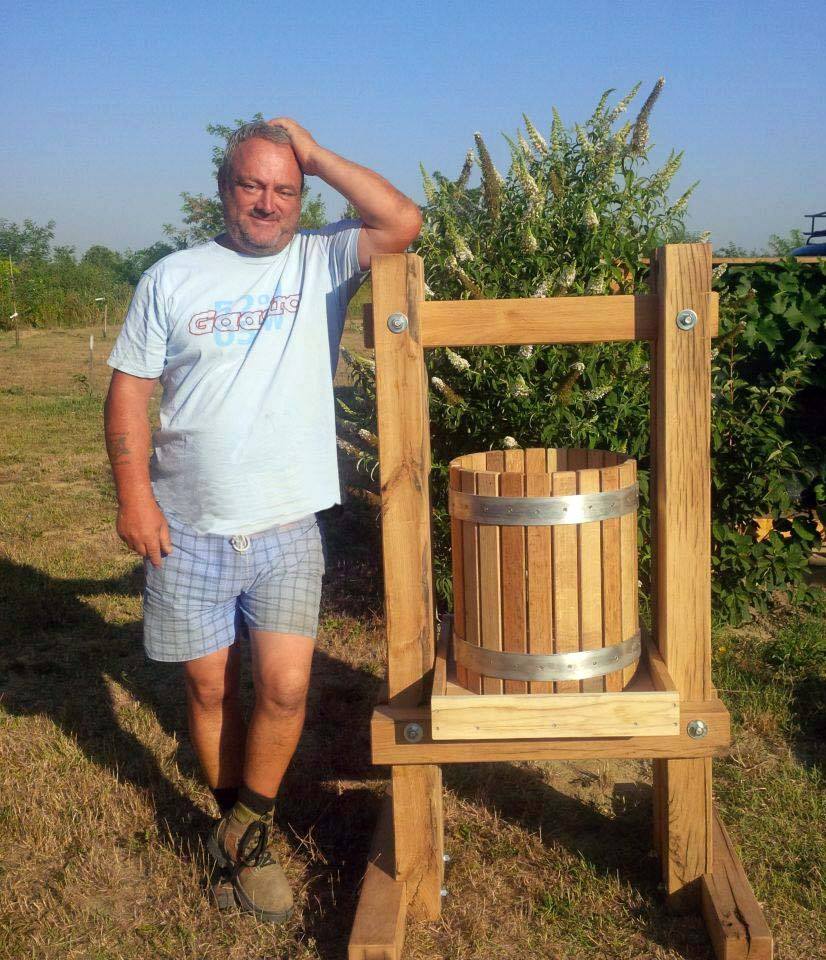
The White Boar was developed from a derelict cottage near the River Bosut close to Andrijaševci. It was opened as a pub and clubhouse for campers and visitors and the small British community that is growing locally.
While we have a good selection of local beers, we also brew our own bitter and have monthly British Beer & Cider tasting. We have many events, including the bi-annual Metal Detecting Rally, which attracts visitors from all over Europe. The area is known for its abundant wildlife, it's ancient history, fishing, hunting, and local folklore. The White Boar is also a new cider farm and our intention is to make it the main outlet for our produce.
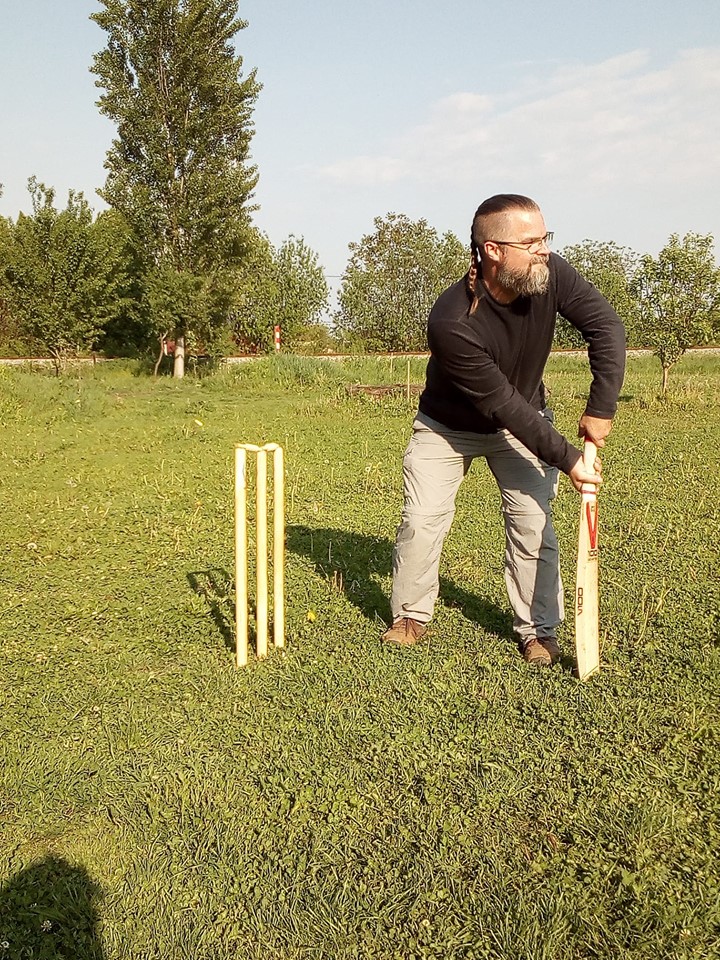
There is even cricket apparently!
We are returning to Slavonia in a couple of weeks to explore further, and so I will try again, but it seems that poet Rupert Brooke was right:
There is a corner of a foreign field that is forever England.
Why not seek it out for yourself? Perhaps you will even find it a little easier than I did. Follow The White Boar on Facebook.
After Days of Croatian Tourism in Slavonia, What Happens Next?
It was quite a show.
Days of Croatian Tourism was held in Slavonia for the first time last week, easily the most high profile tourism event to be staged in the region. It was a chance for Slavonia to shine - and shine it did, oh so brightly - and for over a thousand tourism experts and workers to get to know Croatia's least discovered region a little better.
And judging from the selfies and many postings on social media, it would appear that many of the event's visitors - some on a first-time visit to Slavonia - discovered plenty of interest. I certainly did, even though I have been to the region on a number of occasions. Here are 10 things I didn't know about eastern Croatia last week, for example.

Days of Croatian Tourism had its centre in Osijek, but an attempt was made to spread it around the region, so that visitors could experience as much as possible in a short time. The newly renovated palace in the centre of Virovitica is almost ready for its grand reopening. It looks magnificent and will be a major asset to both the town's tourism and its entertainment programme.

The programme for Slavonski Brod took place at a restaurant just outside the town, which meant that most participants missed out on the star attraction, the magnificent Slavonski Brad fortress. A reason to return soon.
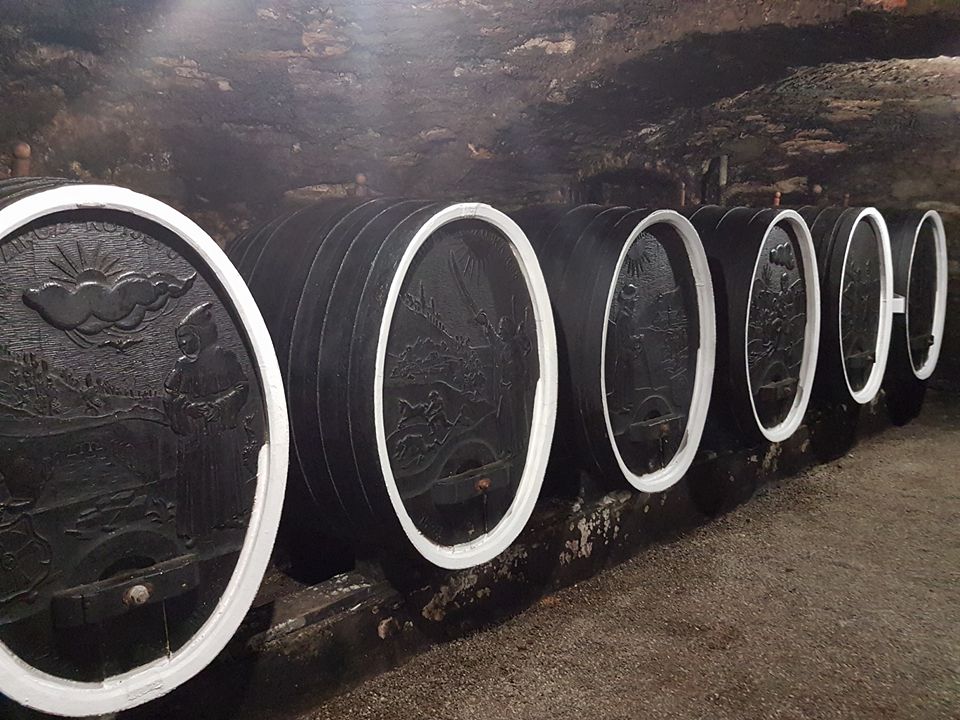
Wine lovers headed to Pozega and Kutjevo for a Grasevina feast, taking in the magnificent cellars of Kutjevo and the amazing 6 barrels which tell the story of its 800-year history - you can learn more here.
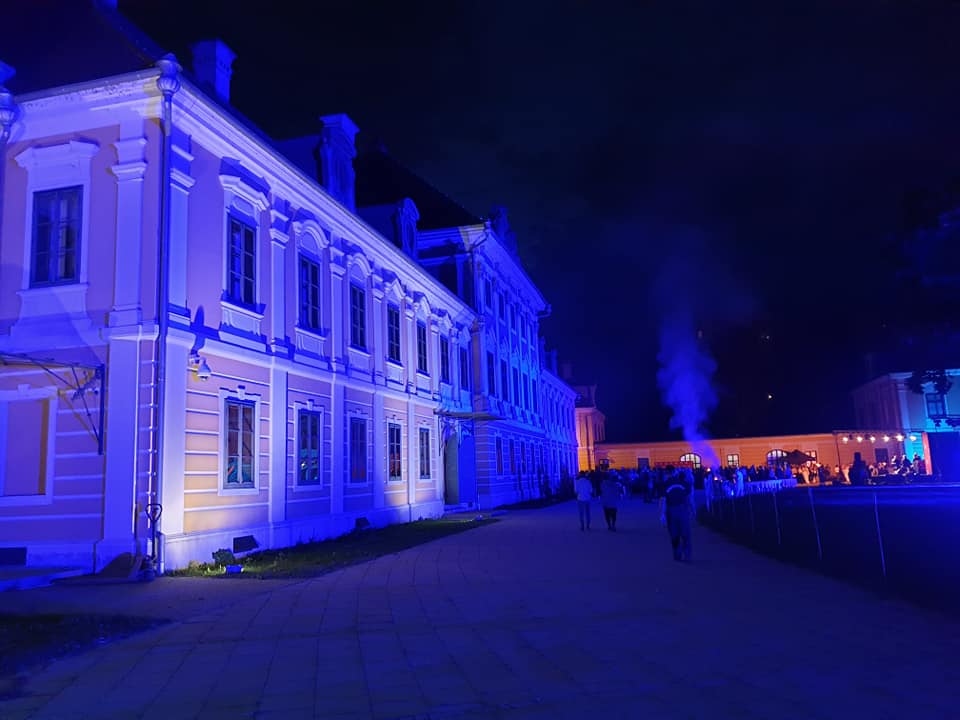
Vukovar, the City of Heroes, which is most associated with the tragedy of war and siege in the 1990s, but which is also a beautiful city rebuilt on the Danube. And nowhere is more glamorous than Eltz Palace which hosted the opening night.
Move over Rome, and visit the Vucedol Museum, which documents a stunning portrayal of life 5,000 years before Christ. The Vucedol Museum (get a flavour in the video above) is one of Croatia's most popular and most impressive museums.

And for more ancient heritage, look no further than Vinkovci, the oldest continuously inhabited town in all Europe, dating back 8,300 years. Birthplace even to no less than two Roman Emperors.
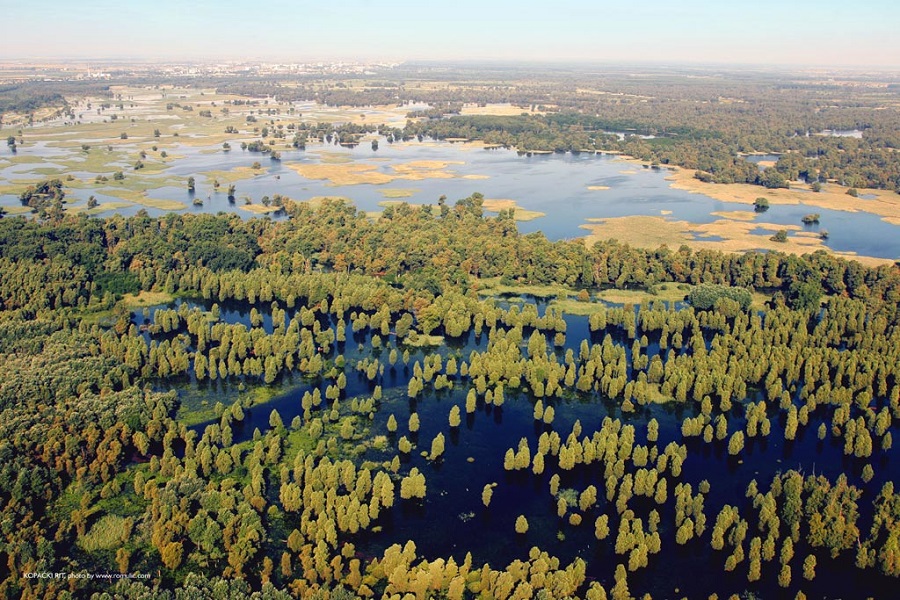
And some went in search of nature, where the nature parks of Papuk and Kopacki Rit (Mario Romulic photo, above) have plenty of diversity to enjoy.
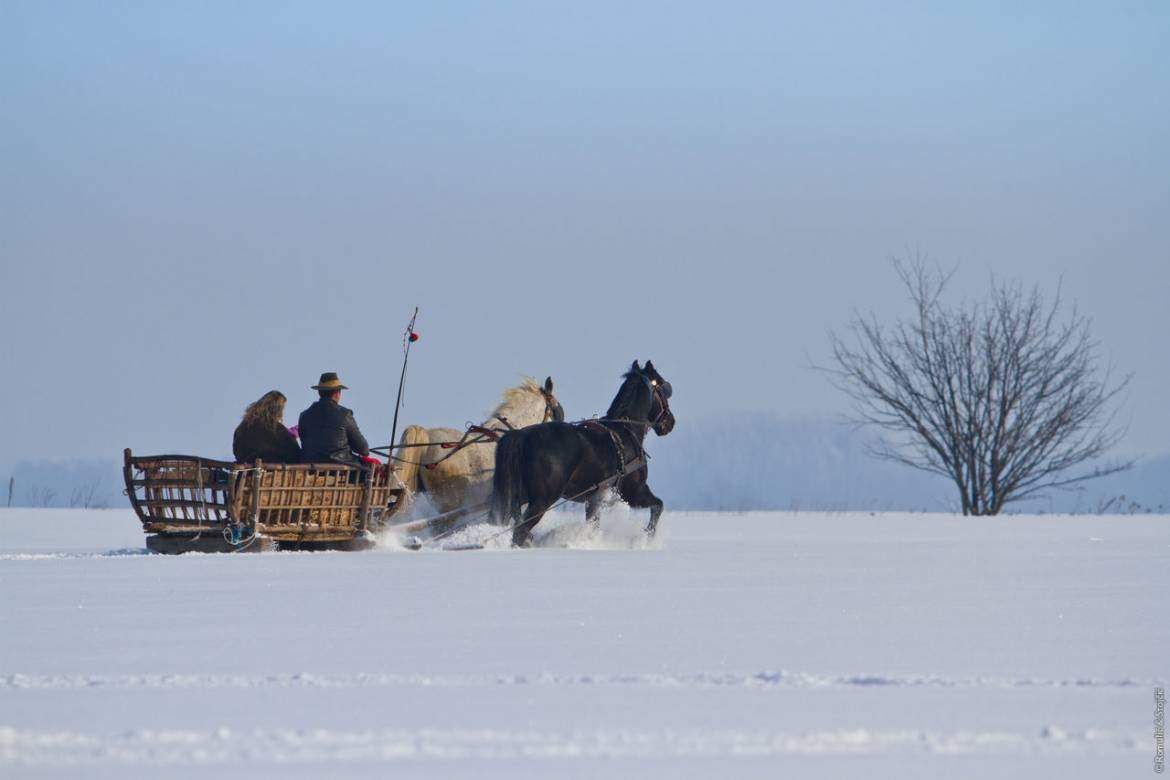
A magical region, where time has stood still in certain ways. (Photo credit Romulic & Stojcic)
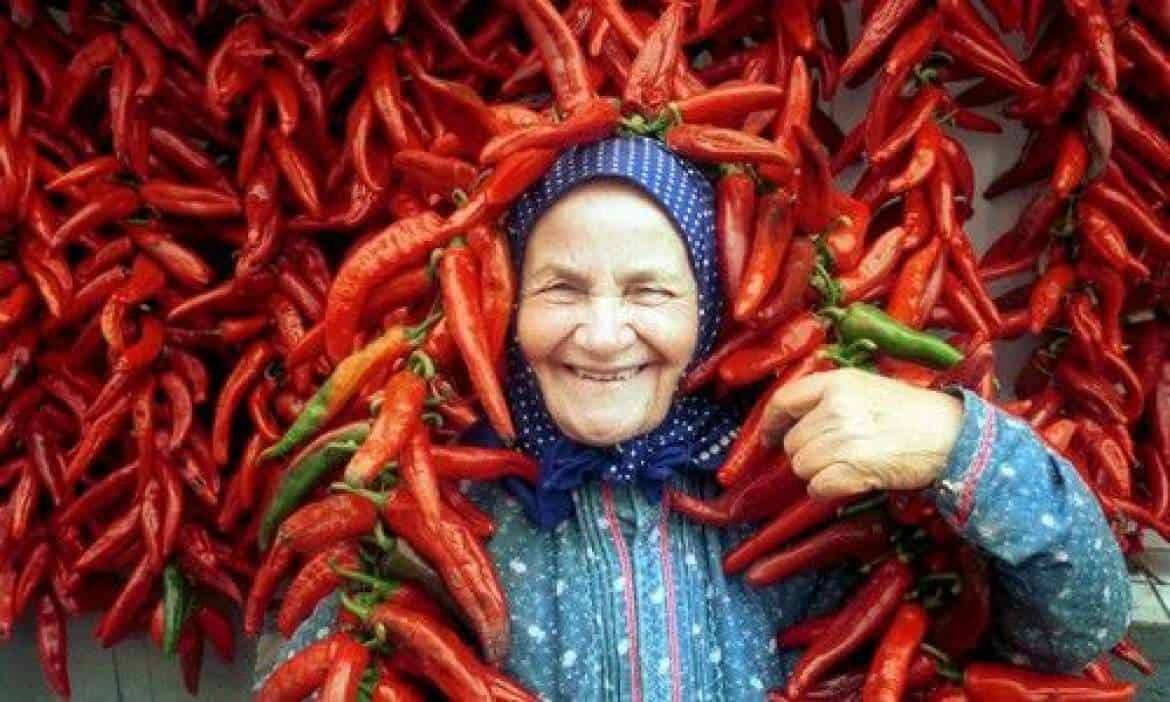
Some made it to the paprika festival in Lug, just north of Osijek. (photo credit Romulic & Stojcic)
Paprika is just one of the ingredients that make up the famous Slavonian cuisine, and there are a number of niche food festivals which celebrate its goodness.
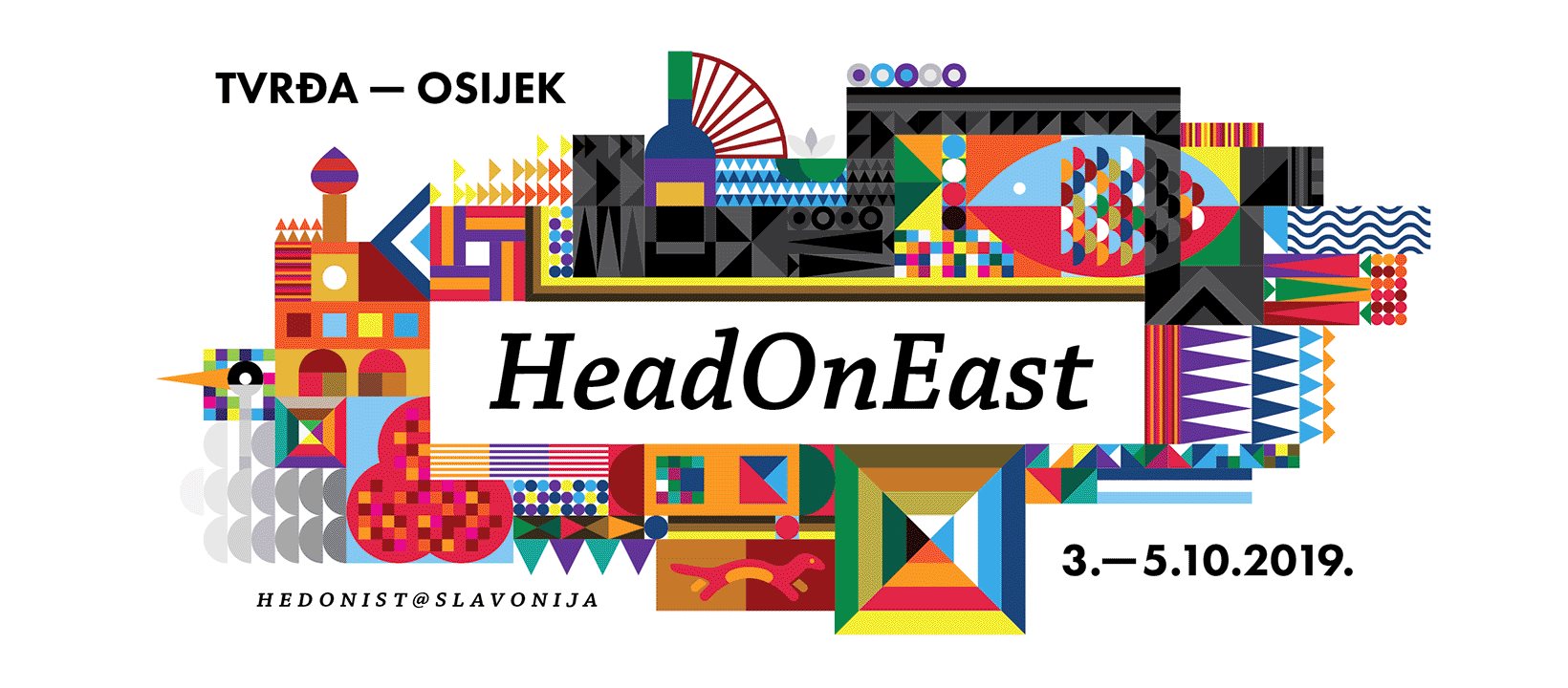
And food is finally at the centre of some excellent branding, with the Head on East/Hedonist@Slavonija at the core of events last week, including a great street food festival.
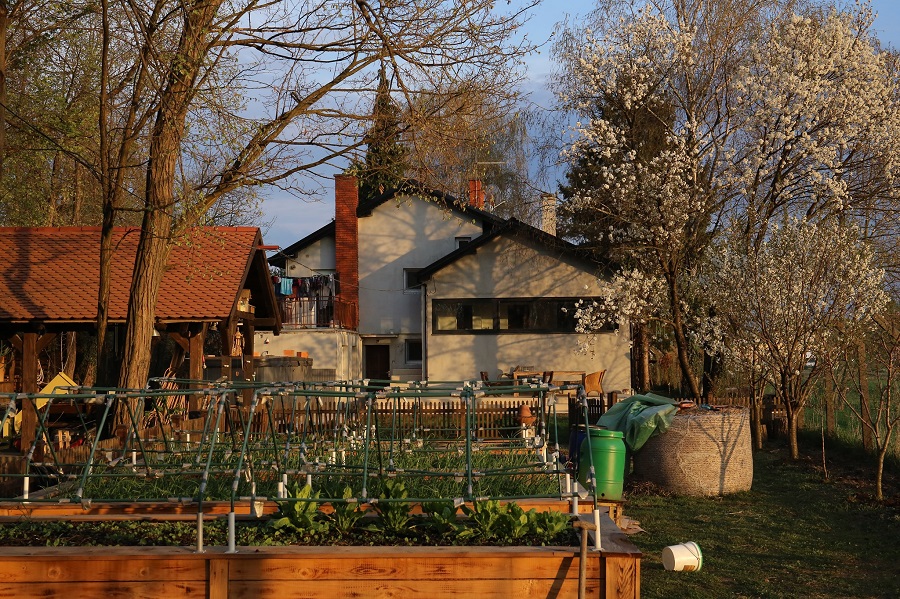
I spoke to several people in Slavonia last week, both locals and visitors. The general consensus from the visitors who are used to celebrating Days of Croatian Tourism in comfortable coastal resorts on the coast was that Slavonia had not only put on a great show but had really gone above and beyond expectations. And the locals I spoke to were both proud and I think a little surprised that things had gone so well. Osijek old town in particular was magnificent on the last night, and the live television coverage of the awards ceremony was beautifully done.
That level of surprise that Slavonia had exceeded expectations got me thinking as I came to the obvious question after the party had finished, the hospitality tents dismantled and the fancy lights turned off:
What happens now?
The Croatian National Tourist Board told me that they have invested significantly in bringing in foreign bloggers and influencers to promote continental Croatia, and all promotion is of course welcome.
I wonder, however, if something closer to home might be more cost-effective, help to build a better longterm tourism base and be implemented in time for next season.
Two simple ideas.
1. I am constantly amazed at how little people living in other parts of Croatia know about the east of their country. It is not a criticism, it is just an observation and a reality. I often ask people where exactly is Slavonia, which parts of the east are included and which not? There is a real black hole in many people's knowledge of what is out there east of Zagreb, something I completely understand. The east is sadly known mostly for the war and suffering, for the tragedy of Vukovar, and for the crushing emigration which is ongoing. As I said in a previous article, it is often treated as a poorer cousin with a disability which is in need of sympathy and protection, rather than being allowed to stand on its own two feet.
The one place that everyone knows about in the east, of course, is Vukovar, and it is entirely right and fitting that the country remembers the terrible events of 1991 each November 18, the anniversary of the fall of Vukovar. Schoolchildren visit Vukovar as part of their education in 8th grade, and for many, that is the sum of their physical association with Slavonia and the east. Little wonder that local people do not associate Slavonia as a desirable place to visit or go on holiday.
And yet it is. Just ask each and every person who attended Days of Croatian Tourism last week. I would be genuinely surprised if there was even one person who did not have a good time.
And so imagine what might be achieved if we took this concept further and started educating. The Croatian Chamber of Commerce ran a big Buy Croatia campaign a couple of years ago.
Why not a domestic campaign to Head on East and discover the magic of Slavonia?
At the recent Croatia 365 conference, the Austrian speaker from ITB Berlin was talking about how Austria developed its tourism. I was surprised to learn from him that foreign tourists make up only 50% of Austria's tourists, with the other half locals. According to his numbers, the corresponding ratio in Croatia is 86:14. And while it is true that a large number of locals are not counted in the tourism statistics as they do not register when they go to their homes on the coast for the summer, the Croatian balance of local to foreign is far from the Austrian 50:50.
There is another great reason to educate Croatians about tourism in Slavonia - it is INCREDIBLY good value. The sad reality is that prices on the Croatian coast continue to rise, and it is becoming less affordable for more Croatian households. Slavonia, on the other hand, offers excellent value for money (and far more generous portions in the restaurants). It also offers an excellent, albeit different, holiday experience to the coast, and with things happening throughout the year. And if, like me, you visit Slavonia and want a bit more (I am returning with the family in 2 weeks for the weekend), a steady and loyal tourism base can begin to grow, tourism can expand, and it will be even more attractive to foreign visitors.
2. My second idea involves engaging with the diaspora. Without the financial muscle of the diaspora, the Croatian economy would be in even more trouble - last year, for example, Croatia received more in remittances from its diaspora than from foreign investment.
They also have an incredibly strong love for the homeland. Encourage the diaspora to take a greater interest in Slavonia and to include it in their next holiday plans. Unlike many appeals to the diaspora from the homeland, there is no humanitarian element to this. If the diaspora do come to visit Slavonia as part of such an initiative, they are going to have such a fantastic time that they will be saying thanks for pushing them into the eastern region for reasons others than remembering the tragedy of Vukovar (and they can, of course, pay their respects at the same time).
Give a man a fish and he will come back for another tomorrow. Teach a man to fish, you know the rest.
Slavonia has SO much potential, but not only potential. It is ready now. Just ask the 1000 plus tourism professionals who were there last week.
Want to learn more about eastern Croatia? Here are 25 things to know.
Days of Croatian Tourism: A Thank You to HR Turizam's Goran Rihelj
October 6, 2019 - Lots of congratulations and self-congratulations in Slavonia this week, with one notable exception. A thank you to Goran Rihelj and his determination to promote tourism in Slavonia.
I have to confess that I thought he was nuts at first.
A tourism blogger from somewhere in the east of Croatia, who signed his emails with Best regards from the oldest town in Europe.
Wtf?
And then when I researched, I found out that yes indeed, there was a town in Slavonia which was called Vinkovci and which had been continuously inhabited for 8,300 years. Hell, two Roman Emperors were even born there.
And I had never even heard of it until this Goran Rihelj chap started sending his regular greetings. And if I had never heard of it...
From his blog on Vecernji List to his own portal HR Turizam, this Goran Rihelj was establishing himself as quite a tourism authority in Croatia. And he was not afraid to speak his mind and to talk about tourism topics that were perhaps not the most convenient to be discussed in public.
And then, an initiative, which confirmed he must indeed be nuts - a campaign to bring Days of Croatian Tourism to Slavonia! The great tourism gathering at the end of each season where all the tourism kings congregate in a pretty coastal resort for 2-3 days of relaxation, partying and prizes. Locations so far which have hosted Days of Croatian Tourism - Opatija, Bol (both twice), Rovinj, Sibenik, Dubrovnik, Zadar, Porec, Mali Losinj and Hvar.
What was this Goran Rihelj talking about, taking this wonderful relaxing holiday away from the coast to come to Slavonia?
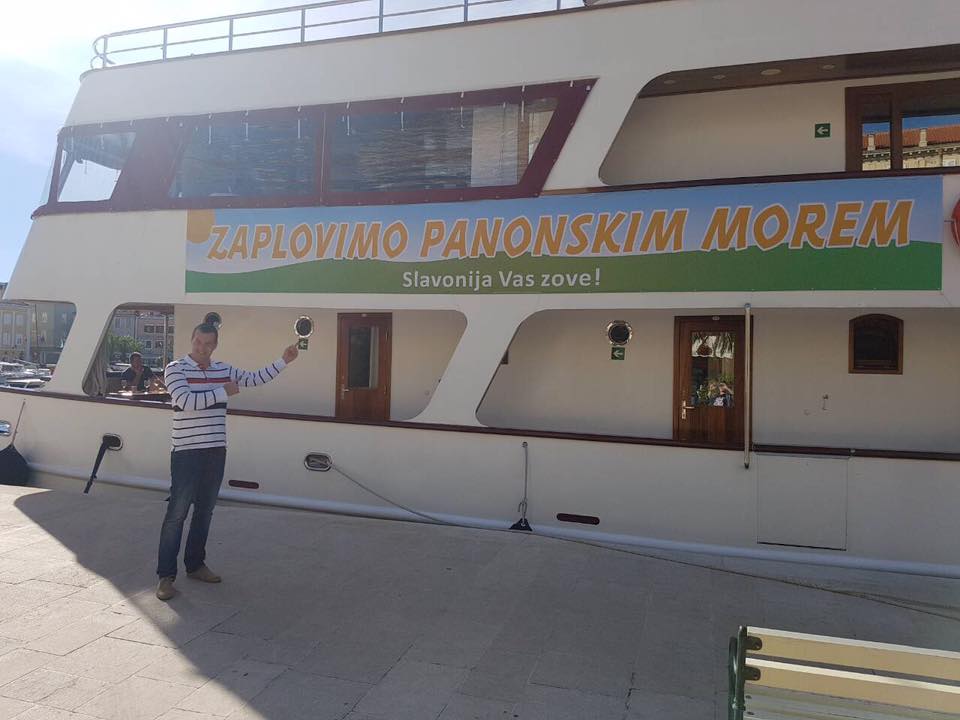
A campaign was officially launched, and Rihelj enlisted the thoughts of Minister of Tourism Gari Cappelli, who acknowledged that the initiative was Rihelj's and that while he supported it, there were logistical challenges to be overcome, not least finding accommodation for 1,000 people.
The campaign was launched in June, 2017, with the hashtag #DHTSLAVONIJA2018, but hopes that the event might be staged on the continent were dashed when it was announced that Days of Croatian Tourism 2018 would be held in Hvar Town.
The voices from Slavonia got louder, and some boats from the Pannonian Sea from Pozega came down to remind people about Slavonia at Days of Croatian Tourism 2017 in Mali Losinj.
Soon afterwards, an announcement that I personally thought would never come - Days of Croatian Tourism 2019 would be held in Slavonia!
I congratulated Goran on his success, but he dismissed it as a success not for him but for Slavonia. But he did remind me that I had promised to visit him in the oldest town in Europe. And what better time than during the first Days of Croatian Tourism on the continent. It was an honour to accept the invitation, and several fabulous days followed - here are 10 things I learned about eastern Croatia this week alone.
The event was a major success, with many of Croatia's tourism workers in Slavonia for the first time, and many, many of them enthusiastically sharing their experiences of Slavonia on social media. And locals were also engaged - the atmosphere in Osijek old town on Friday night was magical.
And there were prizes, so many prizes, given out by Minister Cappelli and the other tourism chiefs - from destination of the year (Rovinj) to categories such as tourist inspector of the year.
But a word of thanks for Goran Rihelj, the man whose initiative started everything? Sadly, nothing. The 2017 acknowledgment of Rihelj's initiative seems to have been lost in 2019, with the tourism chiefs full of congratulations and self-congratulations at their initiative to bring the event to the continent.
Not everyone forgot Goran's initiative and determination to make Days of Croatian Tourism come to his beloved Slavonia, and several colleagues paid tribute to his efforts.
As I do now. Thank you, Goran, for showing the way. May it be the start of a brighter future for Slavonia.
To learn more about eastern Croatia, here are 25 things to know.
To follow Goran Rihelj's HR Turizam portal, click here.
10 Things I Learned at Days of Croatian Tourism in Slavonia
October 6, 2019 - Head on East - Hedonist: the new slogan for Slavonia and the east. Ten things I learned about Baranja, Slavonia and Srijem over the last few days.
Anyone who was anyone in Croatian tourism (and one fat Brit) headed on east this week, as Days of Croatian Tourism was held in continental Croatia for the first time. TCN was there the entire time, taking the opportunity to get to know this region less travelled a little better. It is a region I do not know as well as I should, and so I decided to use the opportunity to explore the region a little more, in addition to the official events, to see what I could discover.
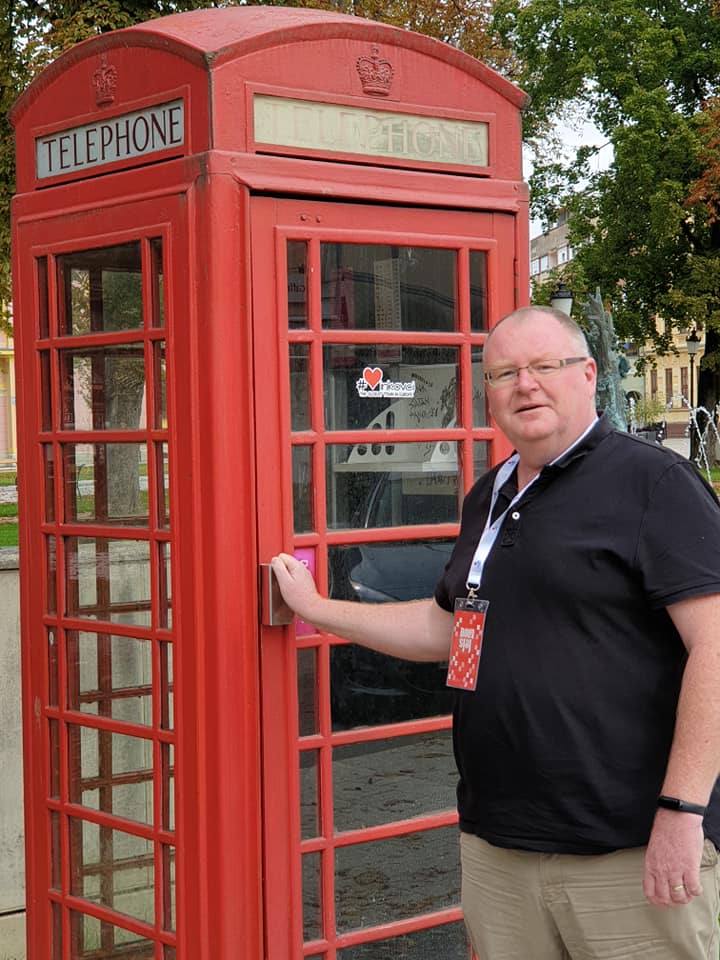
It was a fascinating few days, so much so in fact, that I am heading on east again in a couple of weeks to explore the region a little further with the family. There were surprises at every turn, not only finding an old British telephone box in the centre of the oldest continuously inhabited town in Europe.
Here are 10 things I learned about eastern Croatia that I did not know last week.
1. Baranja is Croatia's closest connection to the most connected airport in the region - Budapest.
In my mind, I had always thought of the gorgeous wine region of Baranja as being at the end of the world in terms of Croatian geography. Which I guess it is if you start from the island of Hvar, where I lived when I first visited several years ago.
However, if you close your eyes and have a little reset about perceptions of geography and tourism, the reverse is actually true. As I was touring Popovac Primary School close to the Hungarian border, it suddenly occurred to me that the most important international airport in the region, Budapest, is not that far away. In fact, there is nowhere closer to Budapest in Croatia than Baranja. With current roads (in the process of being upgraded), the journey time from the airport to Baranja is two hours. And Budapest connects with pretty much anywhere, 12 months of the year - the home of WizzAir and popular destination for many low-cost airlines.
Far from being far away, Baranja is actually very accessible, and if we can develop a message to convey that, the region immediately becomes more interesting from a tourism perspective.
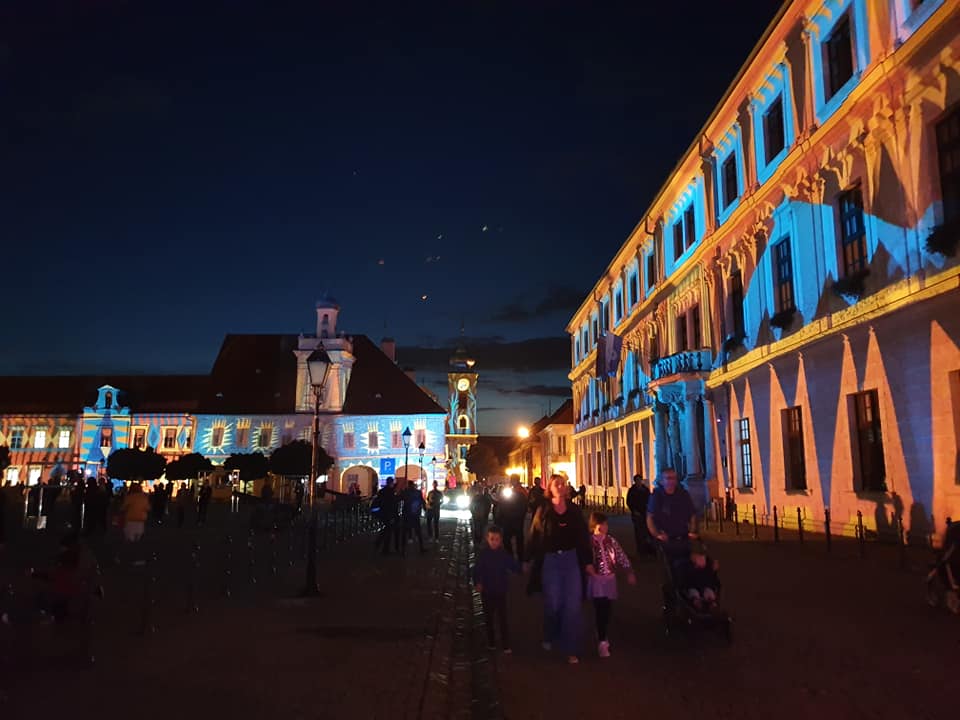
2. Osijek Fortress is a MAGNIFICENT festival venue (and let's hear it for Eltz Palace in Vukovar too).
Osijek Tvrda fortress was GORGEOUS during Days of Croatian Tourism. The historic old town shone, and the accompanying food festival and concerts were a total hit. Many locals were wandering around in wonder at the beauty of the city, while the visiting tourism chiefs (some for the first time) were totally impressed. It felt a little like Advent in Zagreb but with more of an authentic gourmet feel, as well as a more historic heritage backdrop. With the imminent reopening of one of the main squares and a continued project to upgrade the old town, things will only get better. Osijek showed it could stage a spectacular festival, and it was a privilege to have been there.
And it wasn't just Osijek. Eltz Palace in Vukovar hosted the first evening of Days of Croatian Tourism. And for those who thought that Vukovar is all about the suffering and the war, the event at Eltz was a real eye-opener. As you can see below, a stunner.

3. The process of metal casting began in Slavonia.
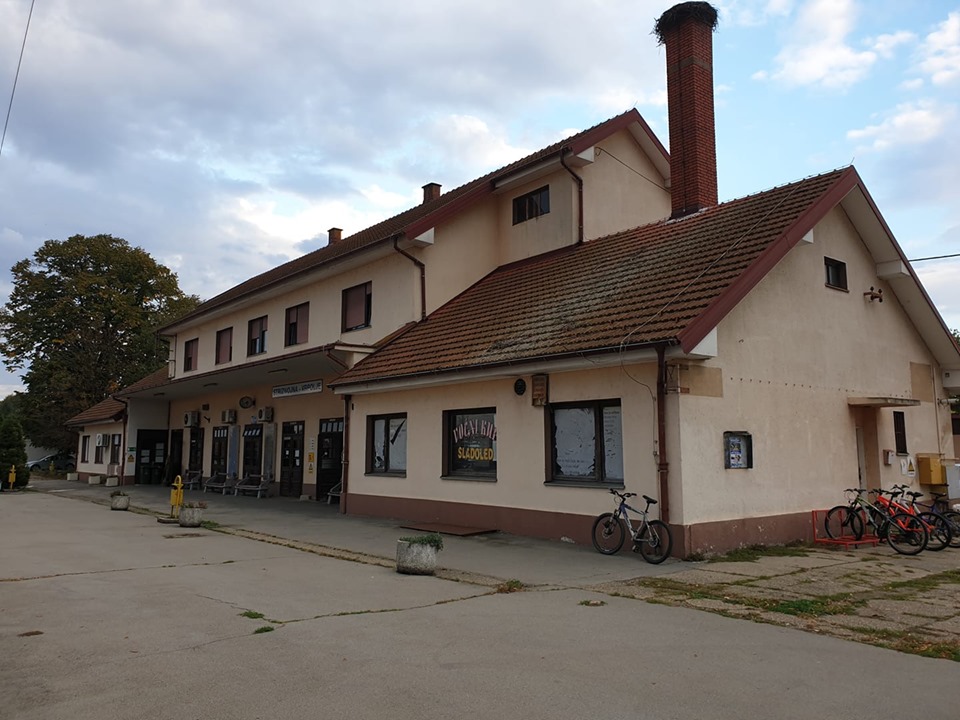
I knew that Vinkovci was the oldest continuously inhabited town in Europe, dating back some 8,300 years, and that its Vucedol culture had several world firsts, but I didn't know that they included the first metal casting in the world. Just one of many things you can learn on a walking tour of the historic centre, just one of many things you can pick up from the excellent tri-lingual signage (Croatian, English and German) around the town.
Goran Rihelj, the man behind the excellent HR Turizam and the initial instigator to bring Days of Croatian Tourism to Slavonia, has been inviting me to stay for years. It was a pleasure not only to meet and stay with his family during this, his finest hour, but also to walk the Vinkovci streets with him to learn more of their secrets.
4. Vinkovci has a river which flows in both directions.

I need to research this one a little more, but there are only a handful of rivers in the world which can flow in both directions. The River Bosut, which flows through Vinkovci, is one. Apparently, there is a very slight incline as the Bosut passes through the town (0.8%) and when the wind gets up, the water heads backwards.
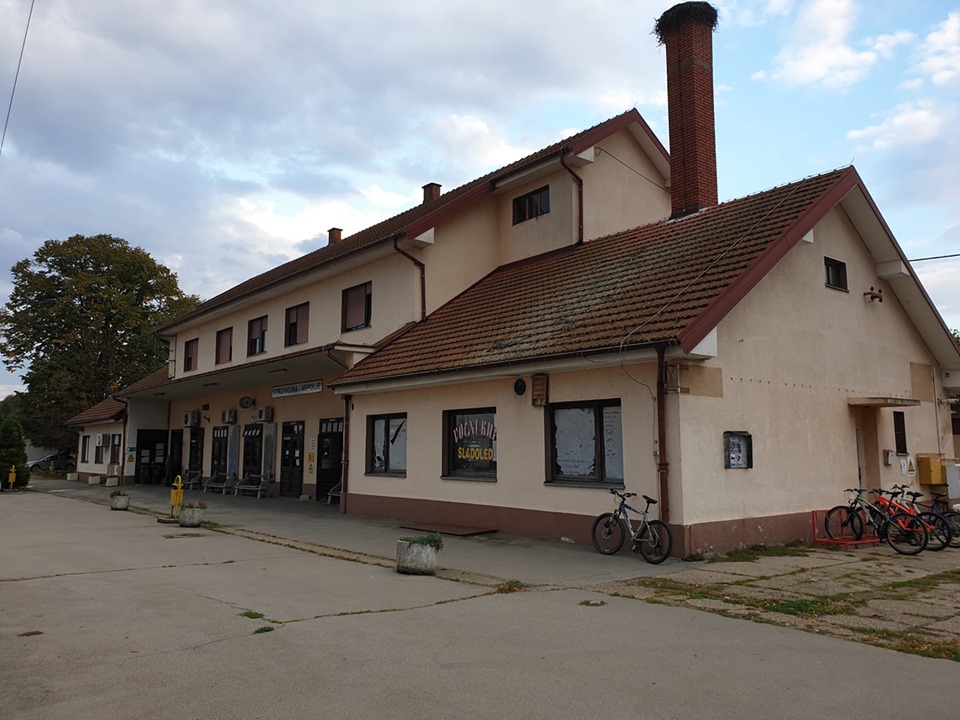
5. There is a quality British pub literally in the middle of nowhere.
So why is there a British phone box in the middle of Vinkovci? It is due to one legendary man from Leeds, apparently, who came to the region in 1991 to help defend Croatia. I have yet to meet Steve Gaunt or read his story in any detail, but he was apparently wounded in the fighting and became a Croatian citizen in 1994.
In addition to bringing the phone box, Gaunt also recently opened an authentic English pub in a village close to Vinkovci. Actually, it is not in a village at all, more in the middle of nowhere and then a little further.
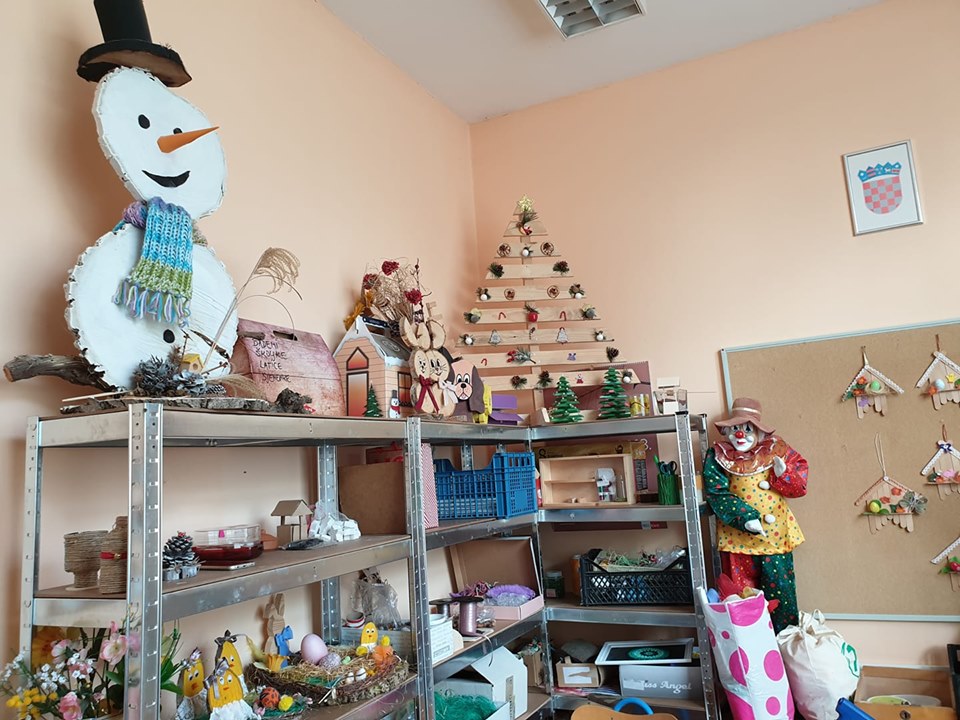
I managed to find The White Boar eventually, which was sadly closed. Steve replied by text that he had to pop back to the UK, so we will save that pint for the next visit in a couple of weeks. There will be a separate story on my journey to The White Boar soon. While you wait, here is where you need to be if you fancy popping in for a pint.
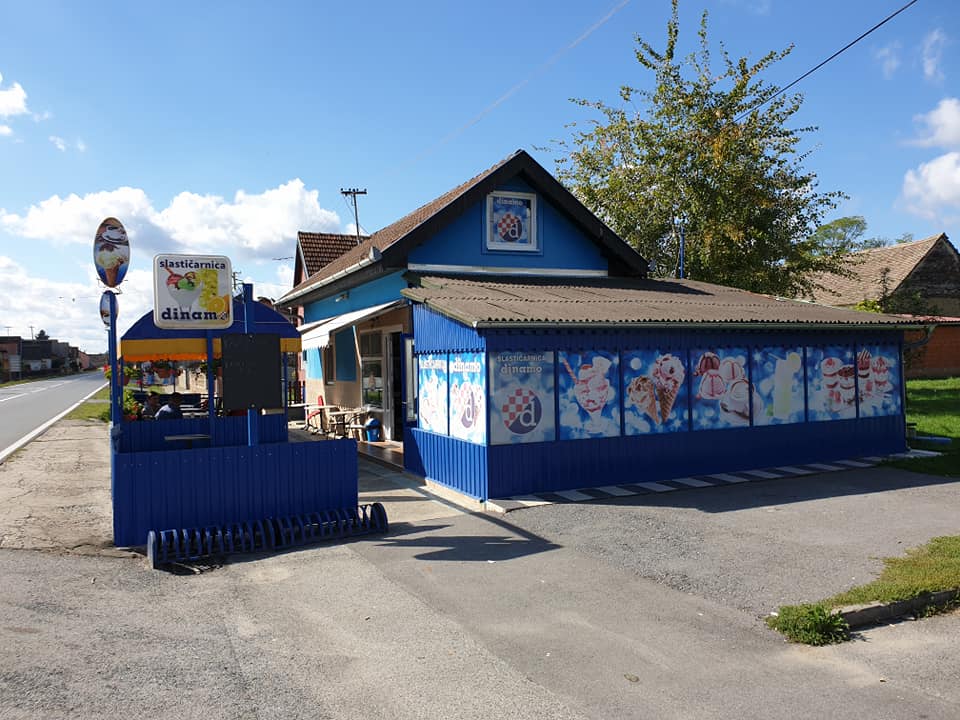
6. Baranja has international ice cream tourism, a Mecca for ice-cream loving Dinamo fans.
"But did you know that Baranja has the best ice cream in all Croatia?" I was asked. Ha, this to a boy from Jelsa - no chance.
And so I set off in pursuit of a rather curious story which is bringing a totally different type of tourism to Croatia - ice cream tourism. Not one for Hajduk fans perhaps, but Slasticarnica Dinamo in Baranjsko Petrovo Selo is located just 2km from the Hungarian border. The ice cream is so good (and it really is) that many Hungarians come over for an ice cream.
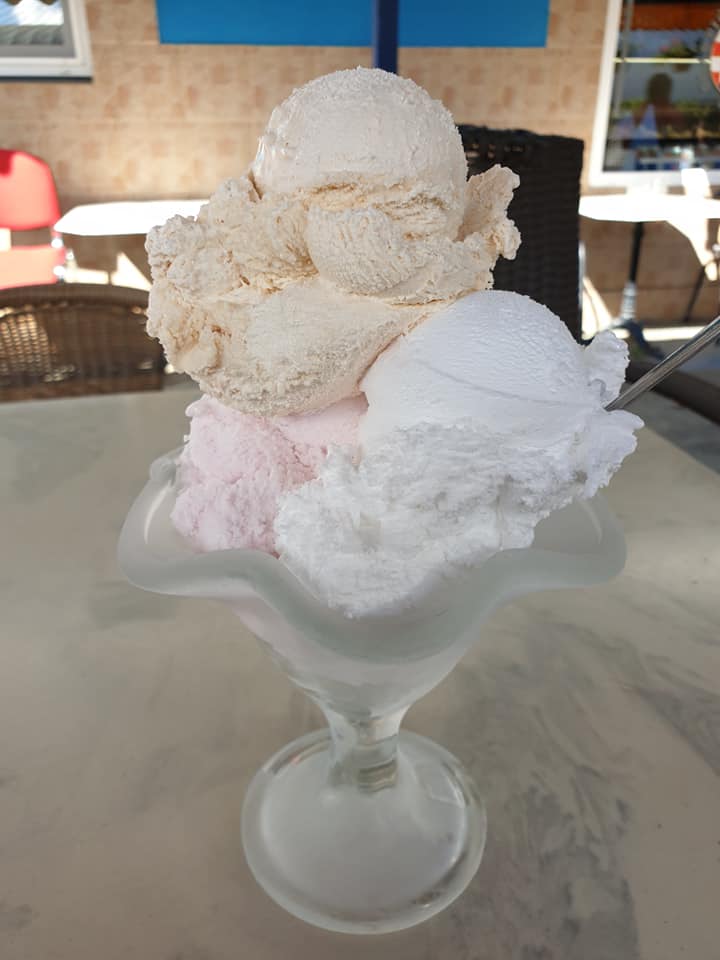
And with prices at just 5 kuna a scoop and the scoops the size of small footballs, this is what you get for 15 kuna. Or coffee and Cedevita for 10 kuna...
7. A craft beer named after a beer-loving Roman Emperor who was born in Slavonia.

So much Croatian tourism potential and history in this photograph, and the only thing I didn't know already (and this will shock some of you) was the bit about the beer.
The Valens craft brewery in Vinkovci, another recent addition to Croatia's vibrant craft beer scene, and another part of Slavonia's impressive gourmet offering. Named after Roman Emperor Valens, one of two Roman Emperors born in Vinkovci, Valens is the latest chapter in the Slavonian beer tradition which dates back 5,000 years to Vucedol culture. While most emperors drank wine, Emperor Valens was such a beer lover apparently that he enjoyed the nickname Sabaiarius, or 'Beer Belly'.
And why is the pub called Orion? After the world's oldest calendar which was discovered in... you guessed it, Vinkovci.
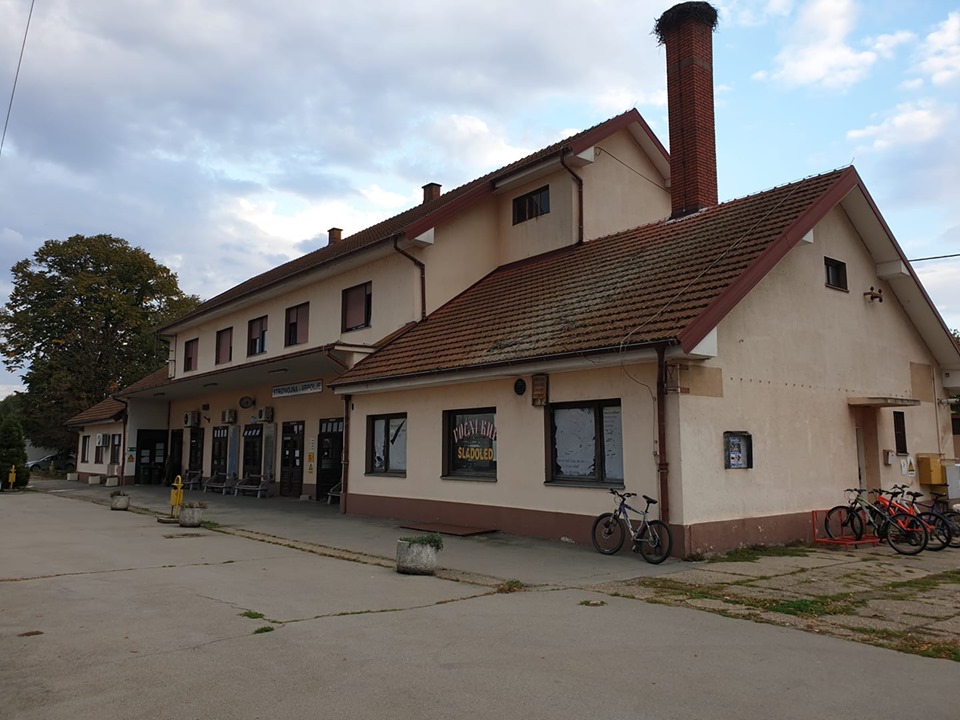
8. A Slavonian train village and Murder on the Orient Express.
A couple of days before I headed east, there was a story in the Croatian media about a small village called Strizivojna which had laid claim to the location as the village near where the famous Murder on the Orient Express killing took place in the Agatha Christie classic. There was talk of turning this into a village tourism attraction with a themed wagon museum and a themed cafe. I decided to pop in, but sadly found myself a little ahead of time, but it will be one more curiosity when it does come to fruition.
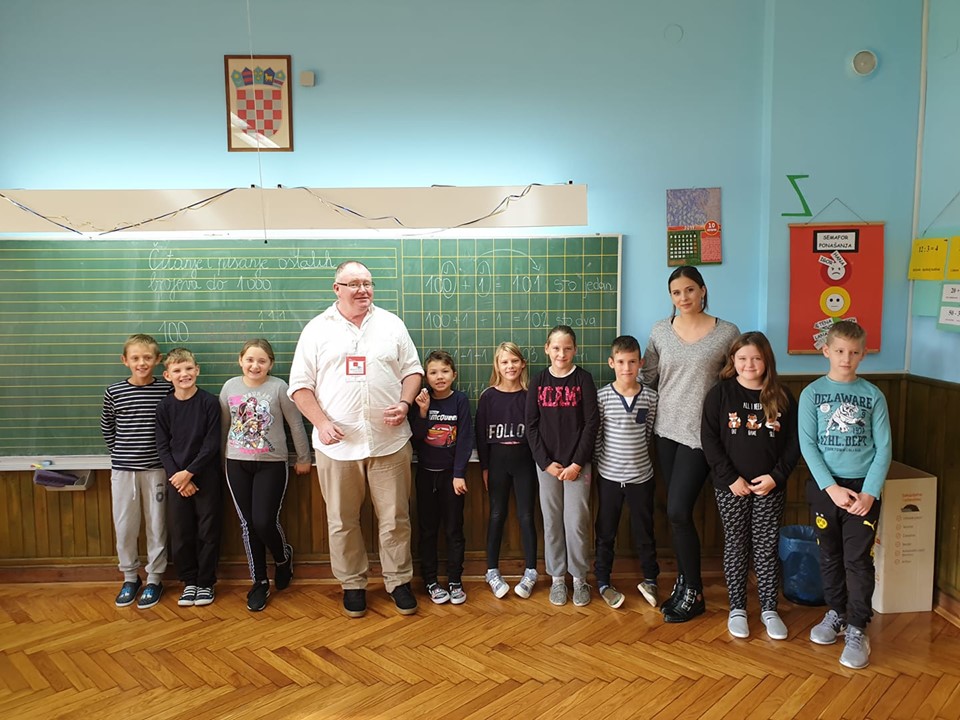
9. Life in a Baranja school - wow!
And while everyone else attending Days of Croatian Tourism was understandably there for the tourism, the part I was looking forward to most was visiting a school in northern Baranja which had reached out to TCN a couple of years ago.
My expectations of what I would find there were low, but what I found was beyond inspiring. The energy, creativity and attitude of the teachers, the well-maintained school and the very happy kids were the undoubted highlight of my few days in the east. Much more on the fabulous Popovac school coming on TCN - a new feature I think many will like.
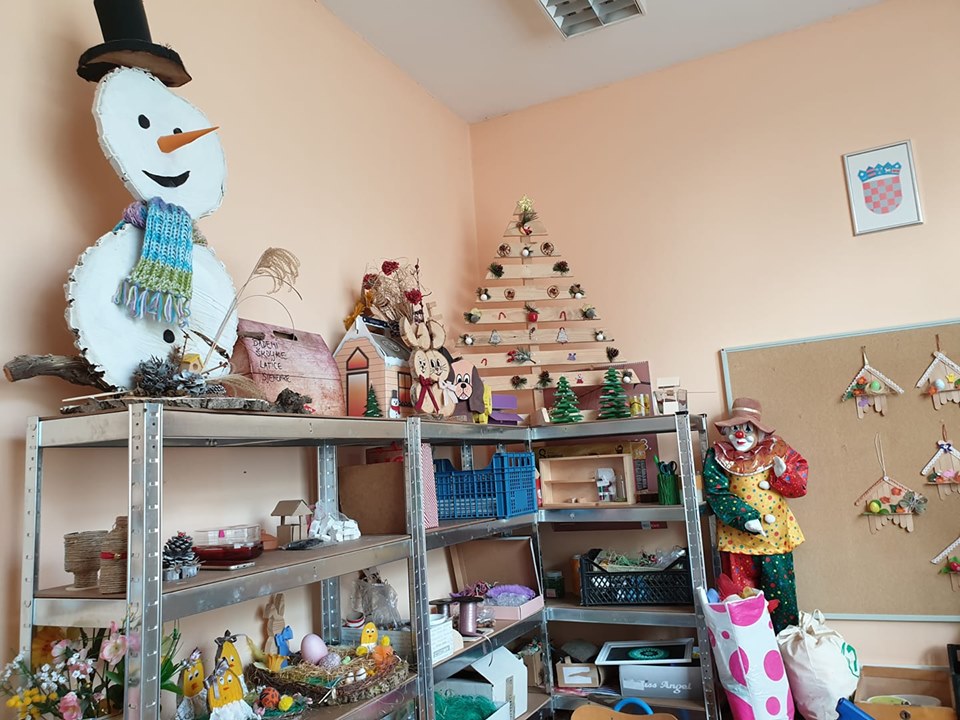
And the other undoubted highlight was a visit to a very dear friend of mine who is undergoing a complete change of direction in life - and one which was awesome to observe at close quarters.

10. Organic Slavonia - gourmet paradise and a model for the future?
TCN readers will be familiar with the incredible photos and timelapse videos of Mario Romulic and Drazen Stojcic. Arguably the best in the business in Croatia and surrounding area, the Osijek maestros have generously supported TCN with their work from day one. But young Mario has had another passion in his head for many years now, and one which he is now giving his undivided attention to - an organic farming lifestyle.
Just a one-night stay took away the stress levels. I had expected to be awoken at dawn by the free-range hens, but instead it was an Osama-lookalike with deep booming voice who woke me from my considerable slumber at 09:40. I can't remember the last time I slept that long. Located 1km from Kopacki Rit Nature Park, OPG Mario Romulic is an absolute gem, and that is before you come across the passion of the man behind the project. And with 3 hectares of land next door owned by Mario waiting to be developed into an organic tourism resort, this has the potential to become one of the top detox spots in all Croatia.
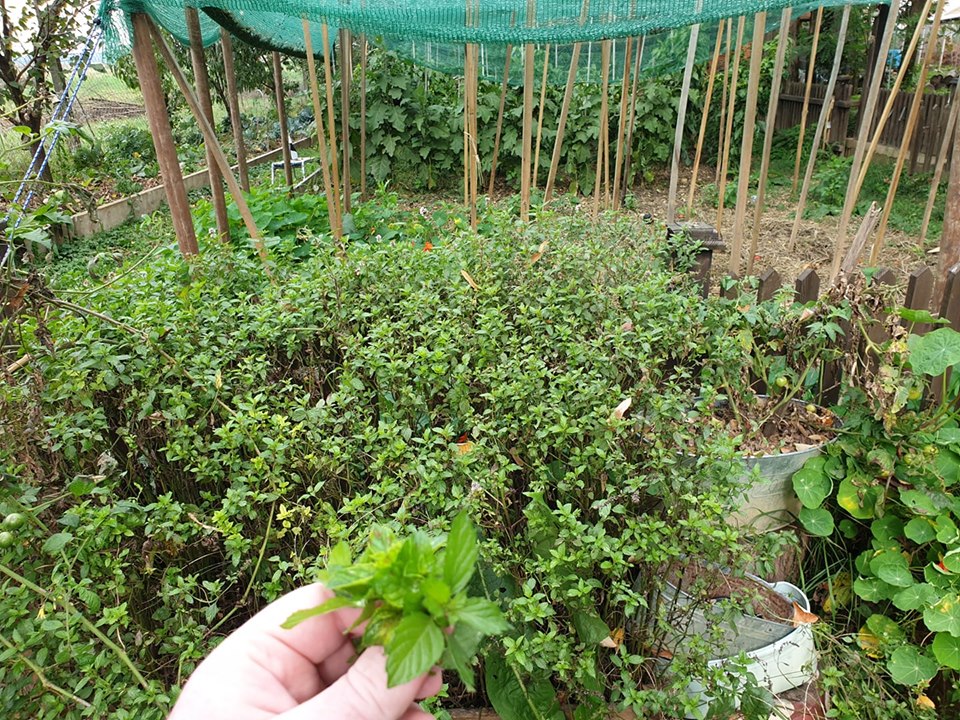
"Tea or coffee with breakfast?" asked Mario, while scrambling his organic eggs and putting together a health Slavonian platter.
"Tea please. That mint tea yesterday was fantastic."
"So you see the mint in the garden out there? Go and pick some for your tea."
Three days away from motorways, laptops and the daily grind, and a relaxing journey back in time and pace of life. They talk about the relaxed 'laganini' lifestyle in Dalmatia, but Slavonia has something similar.
"So much potential here. This could really be an organic tourism powerhouse."
And, as I found myself back in the garden collecting more mint, I found myself agreeing. And while agreeing, also thinking about that Croatia 2.0 reset.
Slavonia is treated as a poor cousin with a disability at times in Croatia, at least according to my observations. If it was left to breathe instead, the results would be great.
But I also think that with a little resetting of focus and the way the world is going, regions like Baranja and Slavonia, which boast great nature, a warm people and great gourmet and cultural offers may yet surprise and find themselves as a magnet for those who want to work remotely and enjoy a healthy and clean-living lifestyle.
And now I have Slavonia in my blood, much as I do Dalmatia as well. More to come on our next visit in a couple of weeks. In the meantime, if you want to learn more about this fascinating region, here are 25 things to know about eastern Croatia.
Vukovar-Srijem County Introduces New Delicacy: Meet the Black Sandwich
As part of the 54th Vinkovci Autumn, a new gastronomic delicacy of the Vukovar-Srijem County was presented - meet the Black Sandwich, made with a black bun and the specialty black Slavonian ham.
HRTurizam reports that with already well known Slavonian specialties like kulen, ham, sausage, cracklings, bacon was somehow always pushed to the background. However, with this project, the goal is to popularize bacon through a new product - the Black Sandwich.
Namely, a black bun is served with fried black Slavonian bacon, which has been found to have a more specific taste and flavor than the bacon of other pigs. It's even been shown to have good cholesterol, too. The goal is to introduce this new sandwich as a recognizable part of the gastronomy offer of Vukovar-Srijem County.
“Black Slavonian pigs are organically fed and produce organic, quality meat. Today's promotion of the Black Sandwich shows that we in Slavonia have excellent and quality products, and the Black Slavonian pig, or as we say the 'fajferica', is certainly one of the better ones,” said Bozo Galic of Vukovar-Srijem County.
Vegetarians, look away - the BlackSandwich consists of bacon made from black Slavonian pigs, a black burger bun, lettuce, tomato, cheese, and a fried egg.
The plan is to begin seriously promoting this new Slavonian treat to ensure that the 'Black Sandwich' is in the hands of customers as soon as possible. The visual identity of the Black Sandwich was made by the famous Croatian comic author Dubravko Matakovic.
According to the announcements from Vukovar-Srijem County, the caterer's interest in the Black Sandwich is high, especially since sufficient quantities of bacon are secured through the Agroklaster VSŽ. Thus, the Black Sandwich should be widely available from next year.
The Vinkovci Autumn was held from September 13 to 22, offering the best display of Slavonian customs in an effort to preserve them. This famous and well-known folklore, tourist, economic, and cultural event attracted around 100,000 visitors.
In addition to the vibrant traditional and cultural program, that is the foundation of the event, the enticing gastronomy and entertainment program included the best Slavonian specialties to souvenirs, a variety of accompanying programs, a wine town, craft beer festival, conferences and various concerts every day.
To read more about lifestyle in Croatia, follow TCN’s dedicated page.
SDP Unveils "Slavonia 2030" Programme for Eastern Croatia
ZAGREB, September 8, 2019 - The opposition Social Democratic Party (SDP) in Osijek on Sunday presented its programme for the development of the eastern Slavonia region until 2030, saying that over 50,000 people have left the region since the launch of the government's Slavonia, Baranja and Srijem project and that they could see "no benefits for the citizens" in the government project.
"When the SDP comes to power, we will revive agriculture through our reform. Family farms will receive 20% higher incentives than they do now and will receive them in time," SDP leader Davor Bernardić said after a meeting of the party's regional branches.
Responding to questions from the press, he did not explicitly say whether the SDP, if it came to power, would scrap the government project. He said they could see "no benefits for the citizens" in it and that 50,000 people have left the region in search of a better livelihood since the project was launched.
"People are living harder and harder. Wages haven't gone up, and farmers have difficulty marketing their produce. The main problem with this project is that Croatia has absorbed slightly less than 15 percent of EU funding available to it. If we had begged we would have got more," the SDP chief said.
The SDP's plan aims to make Slavonia "a rich and successful region with happy and satisfied people" within the next ten years, focusing on the development of agriculture.
"Slavonia is devastated. Our goal is to employ and bring back people, especially those who have gone abroad, and we will do that by boosting the development of agriculture and by building transport infrastructure and supporting strategic industries," Bernardić said.
More SDP news can be found in the Politics section.
Plenković Says Slavonia Continues to Be Priority for His Cabinet
ZAGREB, August 29, 2019 - Prime Minister Andrej Plenković on Wednesday visited the eastern Croatian town of Županja and on that occasion he said that 10.7 billion kuna (€1.45 billion) had been engaged through the Slavonia project in the last three years.
Plenković recalled that three years ago, his cabinet had decided during a meeting in the biggest eastern city of Osijek to invest more efforts to help the five Slavonia counties to boost their development.
"In less than three years, we have engaged 10.7 billion kuna through the project," Plenković said adding that the region would remain a priority for his cabinet.
During Plenković's stay in Županja, his cabinet and the local authorities signed two grant deeds transferring ownership over land to the town for the construction of accommodation facilities and a local sports centre.
A meeting of the government's advisory committee for Slavonia, Baranja and Srijem would be held in Orahovica on September 3.
"Our aim is for people to remain in this area, demographic revival, opening new jobs and support to agricultural and rural development," Plenković said earlier in the day.
Plenković recalled that systematic and permanent contact with the five Slavonian counties "is a clear reflection of a 2016 analysis when it was concluded that Croatia's east needed the Slavonia Project".
More Slavonia news can be found in the Politics section.
Croatian Meat Firm in Slavonia Employs 17 Workers from Nepal
A lot is written about the Croatian demographic crisis, and with the EU allowing all barriers to member states' respective labour markets to fall, the mass exodus of Croatian citizens and residents to other, wealthier, Western European countries is continuing to bite.
This year, the Croatian Government increased the annual quota for numerous types of work positions to allow for Croatian employers to hire third country nationals (non Croatian and non EU citizens) to come and be legally employed in Croatia. This managed to fill the gap somewhat in certain more demanding industries, such as construction, but as the brain drain continues, it is the domestic economy and local employers that are suffering.
One such firm to hire third country nationals is a firm working in the meat industry in Slavonia, and their workers from Nepal are satisfied with life in Croatia.
As Novac writes on the 18th of August, 2019, about a month ago, a firm working within the meat industry located in Slavonia in Eastern Croatia became richer for seventeen new workers who came to Petrijevci (Osijek-Baranja County) all the way from distant Nepal.
Back at the beginning of July this year, Meat industry (Mesna industrija) Ravlić d.o.o. hired some young butchers and butchers' helpers, who adapted very well and managed life in their brand new environment in Croatia despite more than obvious differences in general habits between the two countries, not to mention entire continents.
''Working here isn't difficult. It's very similar to what we were already doing back in our country, so we're pleased with the way we've been received here,'' said Thal Bahadur Gharti Chhetri, one of the incoming workers for Glas Slavonije.
''The biggest difference is how you prepare your food. Although we prefer pork and chicken, we prepare that in a different way,'' Thal Bahadur reveals, adding that they enjoy Croatian specialties on their lunch break, but that upon returning home, they prepare home-made food that reminds them of their own homeland.
At the moment, the biggest obstacle to them is, as expected, the Croatian language, from which they have learned how to say ''good day, thank you and goodbye'' in their month or so of living in Croatia. The group of Nepalese workers were given a one-year contract, but because of their lifestyle, working conditions and good pay, they would be prepared to stay longer than planned.
Make sure to follow our dedicated business page for much more.
French Magazine 'Le Figaro' Falls in Love with Slavonia
August 13, 2019 - Slavonia is in the French spotlight!
One of France's most influential media outlets, the Le Figaro Magazine, published a major 10-page report on Slavonia in its weekly issue. The report was prepared by Jean-Louis Tremblais, a journalist and lover of Croatia, in collaboration with Eric Martin, one of the most respected French photographers, reports HRTurizam.
In September last year, the duo, organized by the Croatian National Tourist Board, stayed in Osijek-Baranja and Vukovar-Srijem counties, and their "Slavonian experiences" were translated into a sizeable photographic report entitled "On the Borders of Croatia. A Terrace on the Danube."
In the published report, which will be seen by millions of potential French tourists, Slavonia was named an open-air museum that will delight lovers of untouched nature and cultural heritage, as well as those attracted by undiscovered landscapes away from the tourist bustle and well-known destinations. "From gourmets to lovers of history, wine, horses and nature, Slavonia is an undiscovered corner of Europe for guests of exquisite taste," the influential French weekly revealed.
The report follows the breeding of Lipizzaners, which is part of the UNESCO list of Intangible Cultural Heritage, and mentioned traditional manifestations cultivated in Slavonia, such as Vinkovci Autumn, which retains authenticity and is a rarity in the tourist destinations of today. This historic region is also presented as a gastronomic paradise for lovers of local specialties such as kulen and various wine varieties such as traminac and graševina.
A separate section of the report entitled "Hedonistic and Cultural Escape from Everyday Life" provides a detailed overview of the most attractive restaurants, hotels, parks and museums to visit. During their stay in Slavonia, Tremblais and Martin visited many other tourist attractions such as Kopački rit, the ethno-village of Karanac, the Vučedol Culture Museum, the cathedral in Đakovo and others.
HTZ points out that filming the 90-minute well-known culinary show "Cuisine Impossible", which was initiated by the Croatian National Tourist Board and in cooperation with representative offices and local communities, was recently completed in June this year in Vukovar-Srijem County, in which the art of preparing fish stew will be presented to the French audience.
Thus, during the first seven months, 315,000 arrivals and 1.1 million overnight stays were recorded by French tourists, which represents a growth of 7 percent in arrivals and 6 percent in overnight stays compared to the same period last year.
In July, however, 136,000 arrivals and 530,000 overnight stays were recorded, which represents a 10 percent growth in arrivals and overnight stays compared to July last year.
You can find the Le Figaro spread on Slavonia here.
To read more about travel in Croatia, follow TCN’s dedicated page.

